In this post, we're going to talk about rebranding by analyzing 40 famous brands that have redesigned their logos.
We will also study and analyze how their designs evolved over the years.
A brand's redesign is about its history and the times it faces in terms of fashions, trends, and needs.
But the evolution of the brand itself also has an influence.
We will see that there are many brands that were originally born as products that are not what they represent today.
Other brands have been expanding their products into various markets, which has motivated them to redesign their graphic identities.
That's why we're going to talk about the history of some brands and learn about the unique features that led them to become what we know today.
This article complements a previous one “Rebranding: the importance of redesigning a brand”, and I invite you to read it.
Rebranding, redesign and restyling
We have heard these terms many times and many believe that they are the same concept, but they are not.
We won't go into detail on this topic because that's not the purpose of this article, but we will give a general idea.
Branding relates to all aspects of a brand's "personality and values" and is managed through marketing strategies.
It is what people want to perceive about it, involving concepts, sensations, shapes and colors that identify it.
Design is a branding tool that graphically represents those aspects of a brand.
This is what we ultimately identify as our visual identity, and from there we develop a corporate image.
Therefore, redesignis the intensive modification of a brand's visual identity to adapt it to a new desired positioning.
It involves a complete overhaul of the brand's communication strategy and identity, which may include a complete change of the logo, corporate colors, and value proposition.
A brand restyling is an update of the aesthetics, a facelift, but without altering its fundamental essence, preserving its perfectly recognizable key elements.
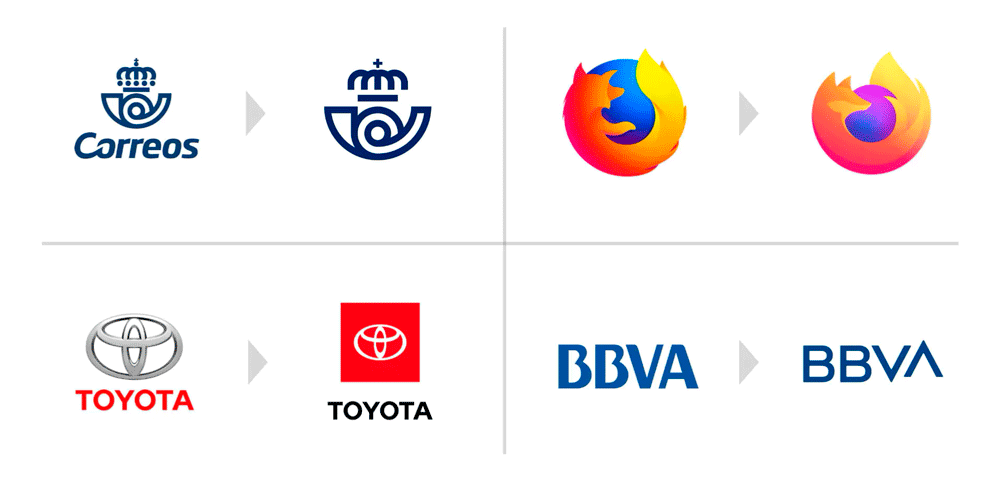
When brands need to change
There's nothing better to develop this topic than to explain it with examples of world-famous brands that we all know.
You've probably seen many of these logos in their design stages and didn't notice their graphic evolution over the years.
That's why I invite you to explore them and learn about their stories and the reasons for their redesigns.
7up
This carbonated drink was born in 1929 with the name "Litiado Lemon and Lime Soft Drink."
Its first logo from 1929 features bold white letters on a dark green background with outlined bubbles of varying size to represent the soda's carbonated nature, on the bottle caps.
In 1930 it was already called 7up with a winged logo intended to represent the drink's ethereal and bubbly sensation.
During the 1930s, the design was stylized with the number 7, which would end up becoming the brand's icon.
From 1938 onwards they decided to add red and black and the brand began to acquire a more precise definition.
The logo varied considerably according to different criteria, sometimes returning to green and other times using red as the predominant color.
Finally, it was decided to assign green to the letters and red to the point that separates both words.
Starting in 2000, the lettering returned to white, contrasting with the green of the bottles with subtle three-dimensional effects.
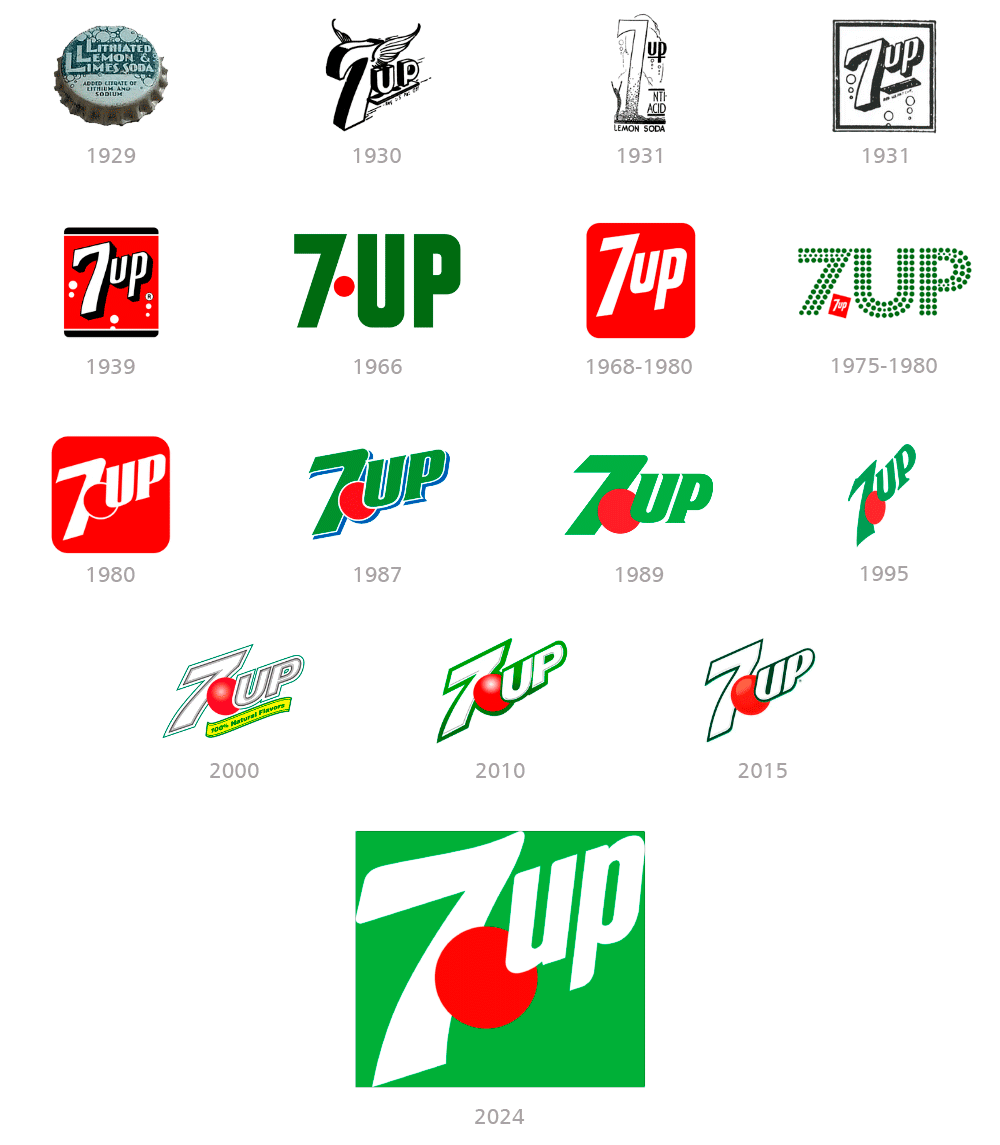
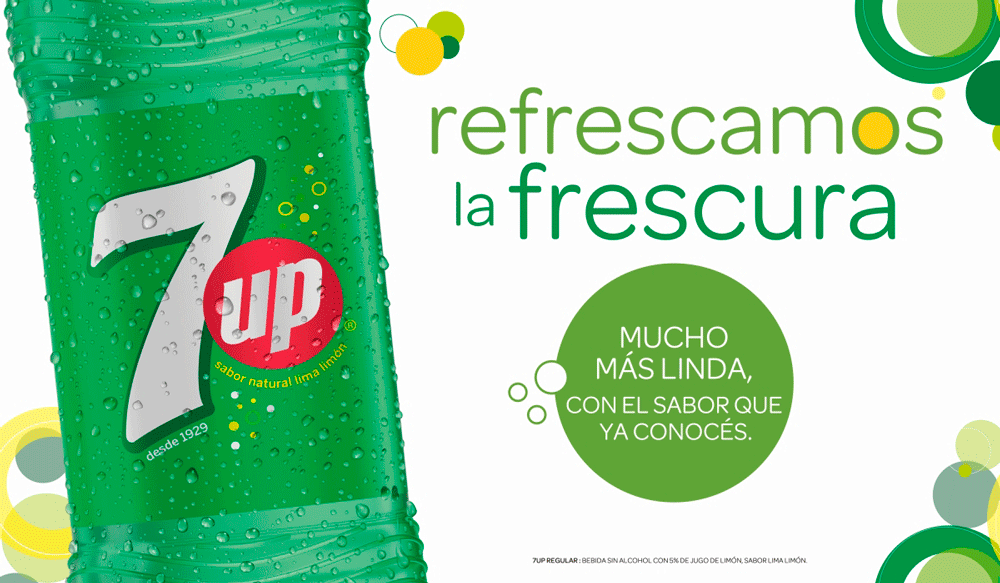
Adidas
The name Adidas is derived from its founder Adolf (Adi) Dassler and was first used in 1941, with a typography very similar to the current one.
In 1971, in addition to the wordmark, the iconic clover was added and the traditional 3 stripes appeared.
In 1991, the designer added more power and weight to the emblem, maintaining the three stripes, which became bolder.
The minimalist design evokes a sense of movement and upward progression, symbolizing the athletic rise of Adidas's clientele and the brand's forward-thinking approach.
The bars vary in length, creating a dynamic visual rhythm that conveys speed and agility, while also demonstrating the concept of a competitive podium.
This contemporary interpretation of the classic motif retains the heritage of the original while adopting a sleek, modern aesthetic.
With the arrival of the new century, the three stripes took on a lighter and more refined appearance, traversing a black circle that represents the world.
In 2022, the 1991 concept returns, but with the option to omit the wordmark, as an avatar for social media and web applications.
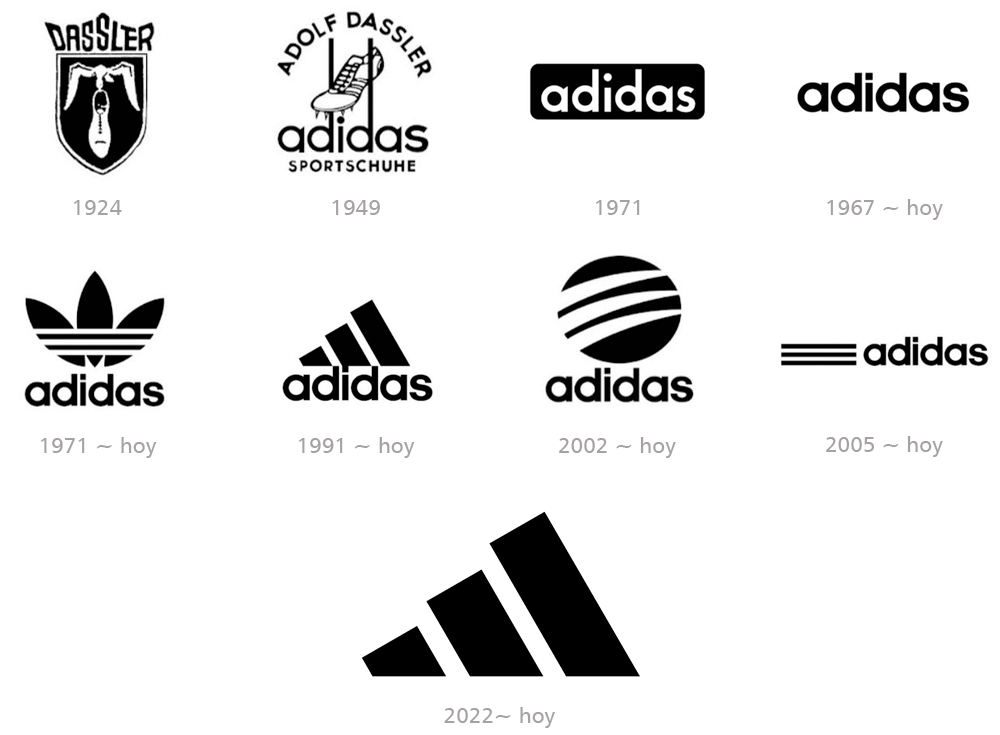
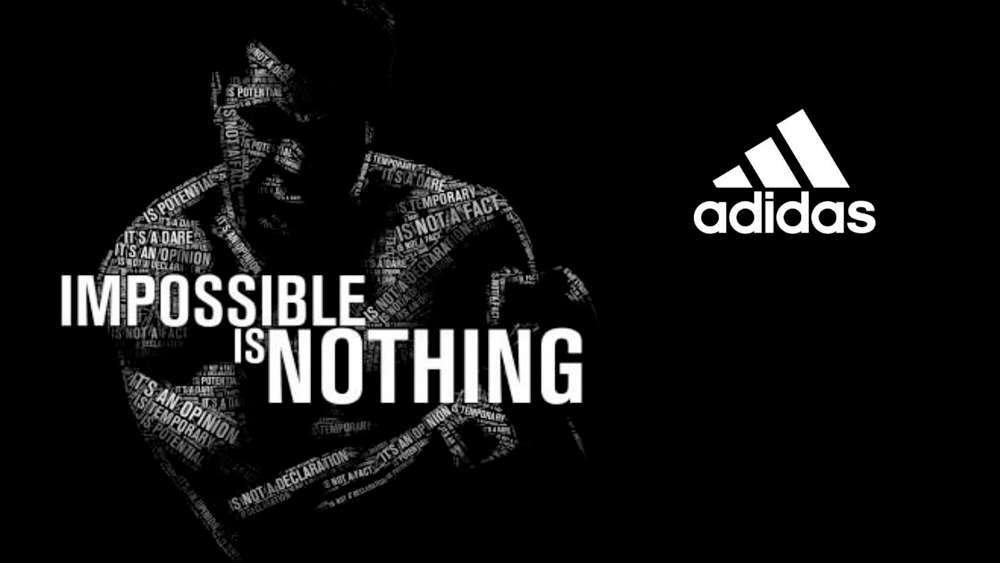
Amazon
Amazon is the giant of online shopping and its logo reflects that concept.
The current logo was designed in 2000 by Turner Duckworth under the supervision of company founder Jeff Bezos.
The orange arrow of the logo leaves the letter "a" and ends in the letter "z", indicating that they sell all the products you want, from a to z.
The arrow also represents a smile, in which the tip is a stylized dimple or a line of expression, which gives a wink of sympathy, joy and confidence.
This smile represents the happiness that people feel when they buy on Amazon, since the company wants the best customer satisfaction, offering a friendly service.
The black typeface demonstrates Amazon's superiority and dominance in the online retail market, which has been demonstrated by its financial metrics.
The bright orange color detracts from the formality of the logo and adds energy and appeal.
It also symbolizes pride and happiness, showing how Amazon works and thinks.
This great logo has become a benchmark in world brand design.
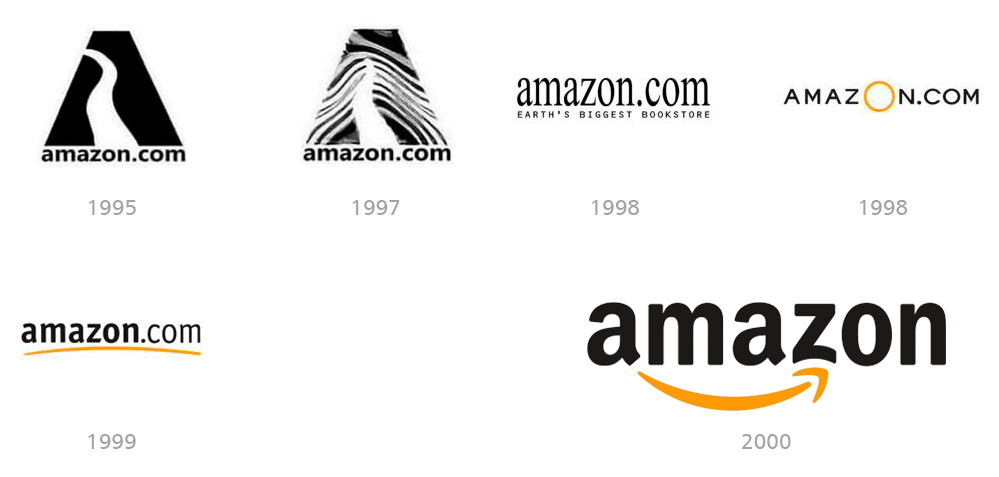
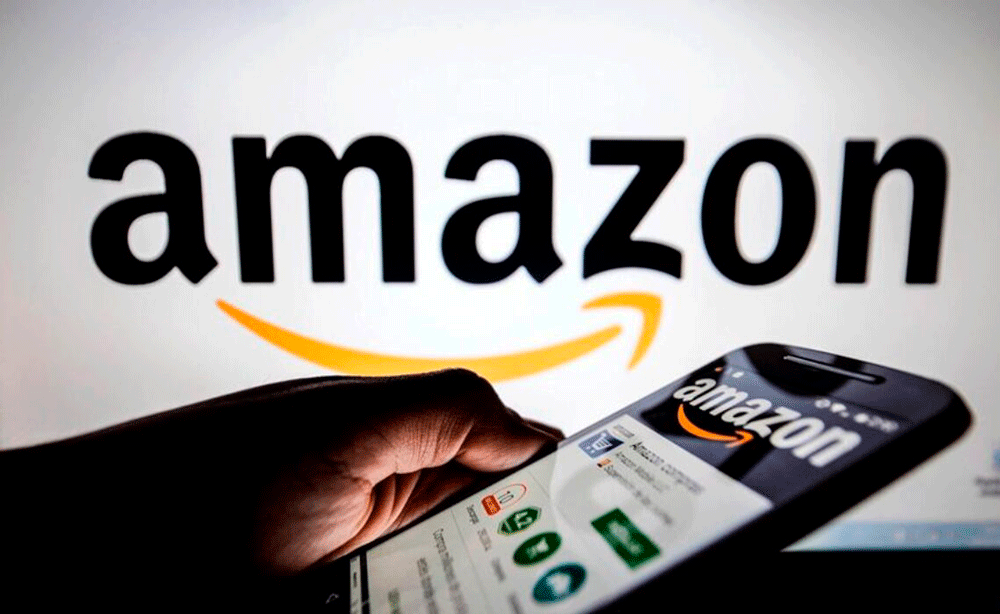
American Airlines
The original American Airlines logo was created in 1934 by Goodrich Murphy.
It features a white eagle perched on the globe with its wings spread upward, showing the infinite possibilities and power of the enterprise.
The airline's visual identity's blue, white, and red color scheme is not only a tribute to the U.S.A. but also a powerful combination, perfectly reflecting the company's influence, professionalism, and authority.
The brand evolved over the following years, maintaining the original concept and adapting to the trends of the times.
The current logo was completely redesigned in 2013 by the marketing agency FutureBrand.
The result is an elegant and memorable brand that represents the head of an eagle; one of its wings is red and the other blue.
The logo reflects freedom and the struggle for success and was named the Symbol of Flight.
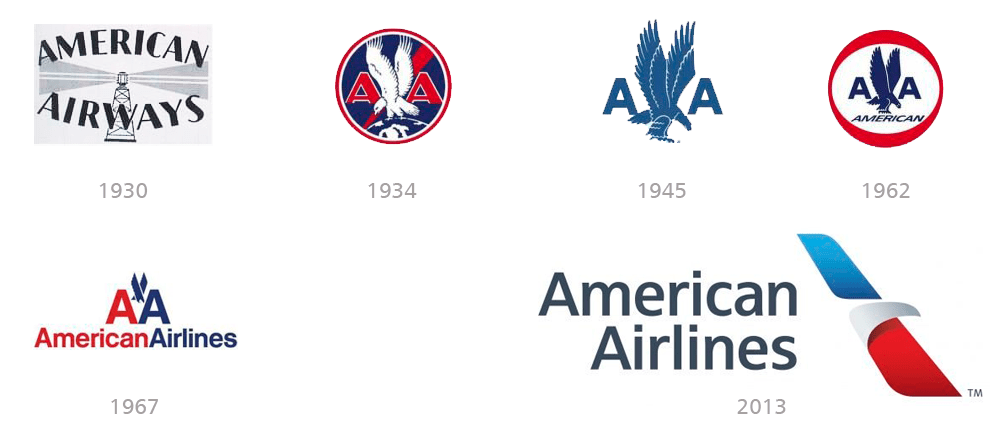
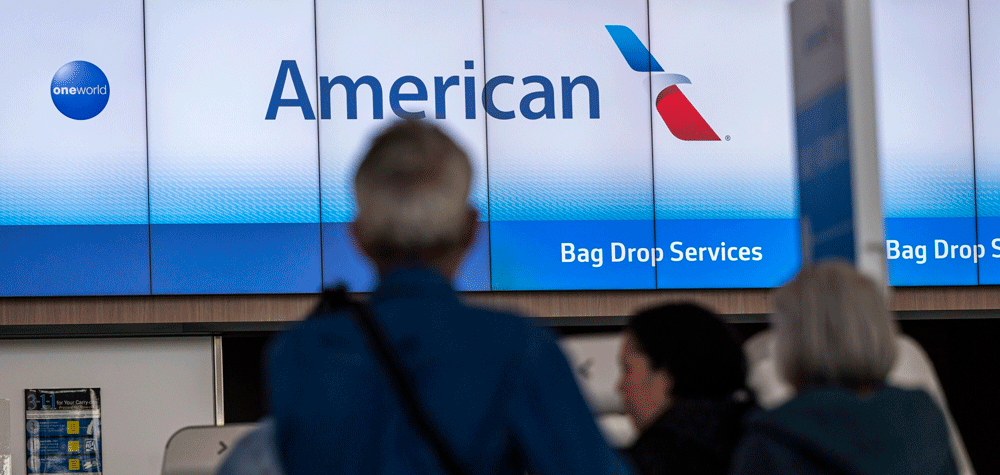
Animal Planet
Animal Planet is an American news television channel established in 1996, owned by Discovery and dedicated to documentaries and series about animals.
But the first Animal Planet logo was created in 1994 when it was not yet a television channel.
It consisted of a white big cat claw drawn on a solid red circle, using the same shade of red as the logo.
In 1996, the channel was created and a more ornate and detailed logo was designed, represented by the profile of an elephant pointing its trunk toward the sun.
A restyling of the brand was carried out in 2006, where the sun was replaced by a three-dimensional image of the Earth, making it appear as if the elephant was playing with the planet as if it were a ball.
The 2008 version is completely different through a drastic redesign, removing all graphic elements from its visual identity.
The only bright detail is the green letter "M", which is located horizontally above the rest of the black letters, simulating a jungle environment.
Finally, in 2018, the elephant returns to Animal Planet's visual identity, but today it is a contemporary, more abstract and almost childlike drawing.
The stylized blue animal now moves to the right, toward tomorrow, as a symbol of progress and development.
The logo is modern and friendly, and its color palette adds freshness and youthfulness, evoking a sense of loyalty and reliability at the same time.

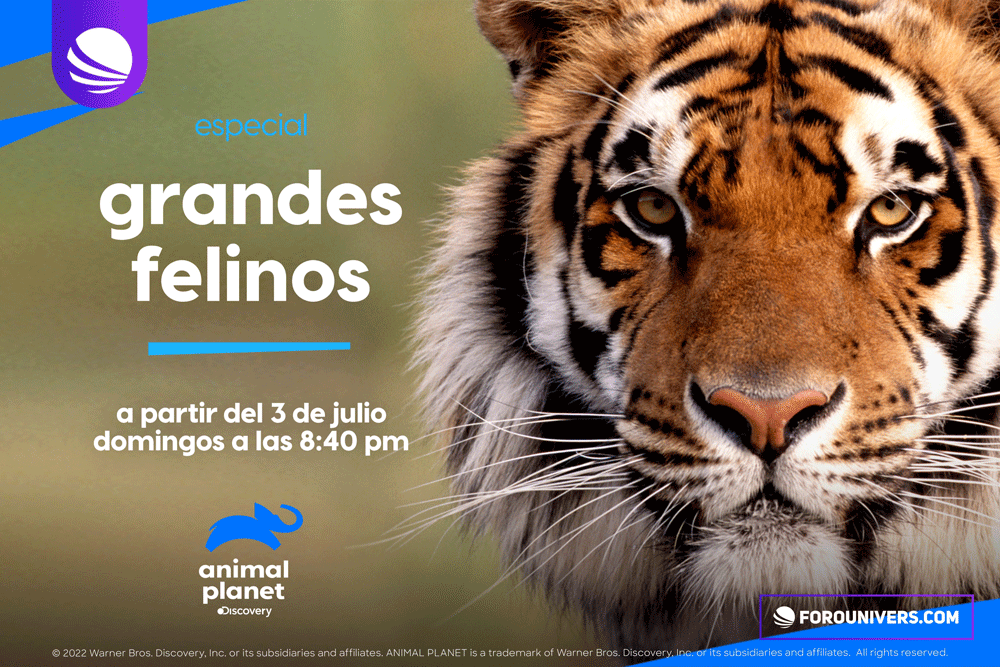
Apple
The Apple logo has had several iterations throughout its history, from the complex original design to the recognizable bitten apple.
The original 1976 trademark was designed by Ronald Wayne and is not morphologically considered a logo but an emblem.
It shows Isaac Newton sitting under a tree and was considered too complicated and difficult to reproduce on a small scale.
In 1977, Rob Janoff created the iconic rainbow-colored bitten apple, a simpler and more recognizable design that remains to this day.
When trying to simplify the symbol of the company, Yanoff wanted to place the image of the bitten apple since the word "bite" in English is bite, so it is translated as a term in computing (which is byte, like gigabyte, megabyte , etc.).
Steve Jobs returned to Apple in 1998 and decided to update the logo while maintaining the concept that was already successfully established in the market.
It adopts a monochrome and minimalist version of the Apple, in line with the company's new aesthetic.
Since then, the same concept has been maintained, varying only in the colors and three-dimensional treatments, which were very common at the beginning of the 21st century.
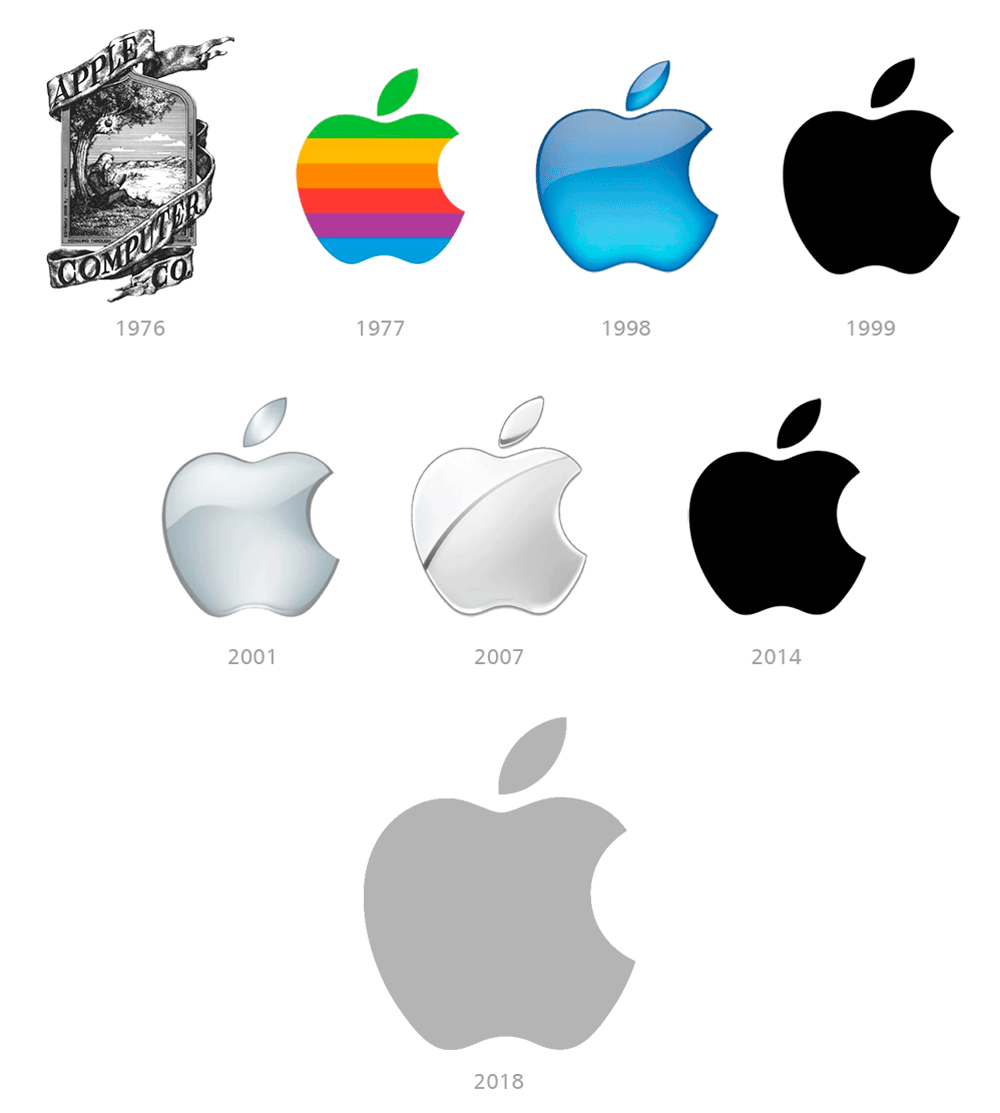
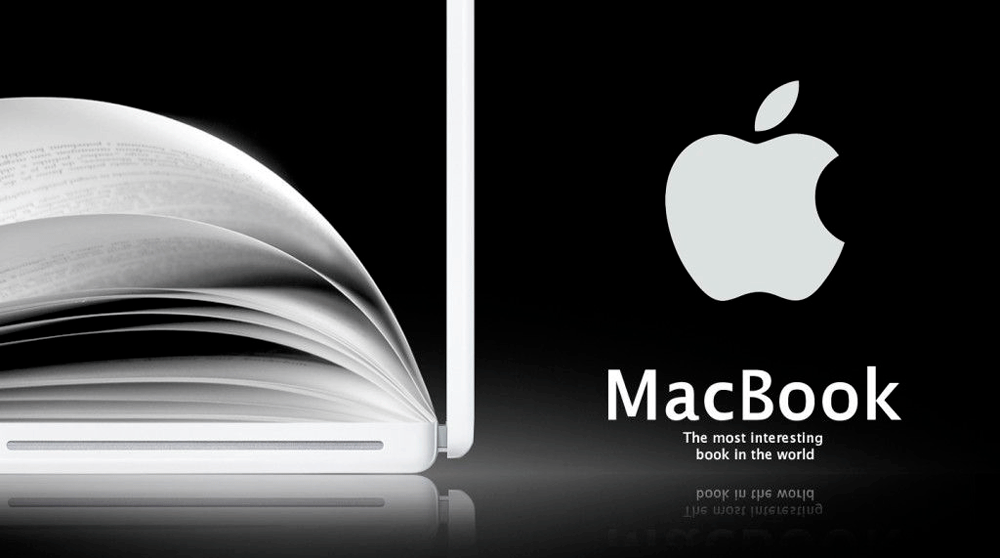
Bayer
Bayer is a German multinational pharmaceutical company, one of the largest in the world, founded in Barmen in 1863 as a dye factory.
But Bayer didn't develop a logo until 1881, and it consisted of an illustration of a lion based on the coat of arms of Elberfeld, the town where the company was headquartered at the time.
The 1904 logo consists of two crossed words BAYER sharing the letter "Y" and enclosed in a circle, and is the brand concept that endures to this day.
The Bayer logo becomes one of the world's best-known trademarks.
A milestone in the logo's popularity and a clever marketing idea was the decision to print the new logo on tablets, especially aspirin.
The Bayer logo has remained almost exactly the same for over a century and works equally well in large and small sizes, with or without color.
In 1989, two lines of dark green and blue were added, colors that soon became typical of Bayer.
The year 2002 saw the first colored version of the Bayer Cross, in the blue and green colors that symbolize the brand's modernity and freshness.
In 2017, following a successful graphic evolution, the color gradients in the circle disappeared and the colors were modified.
This makes it easier to use the logo in digital media and gives the brand a more modern and updated look.
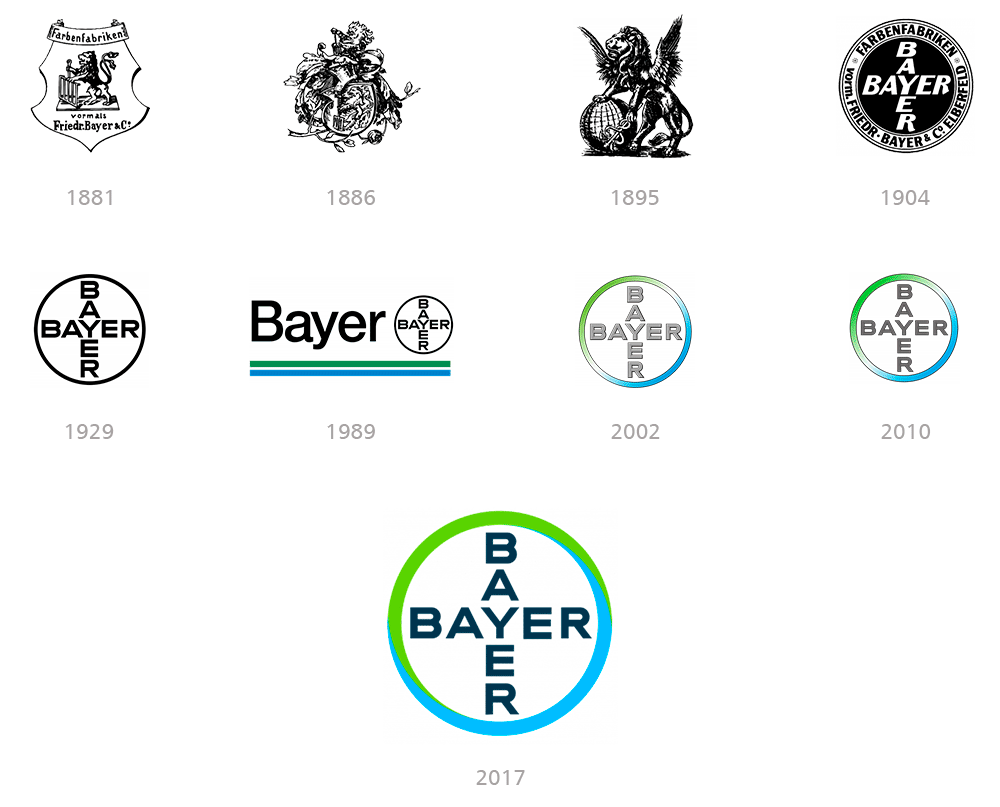
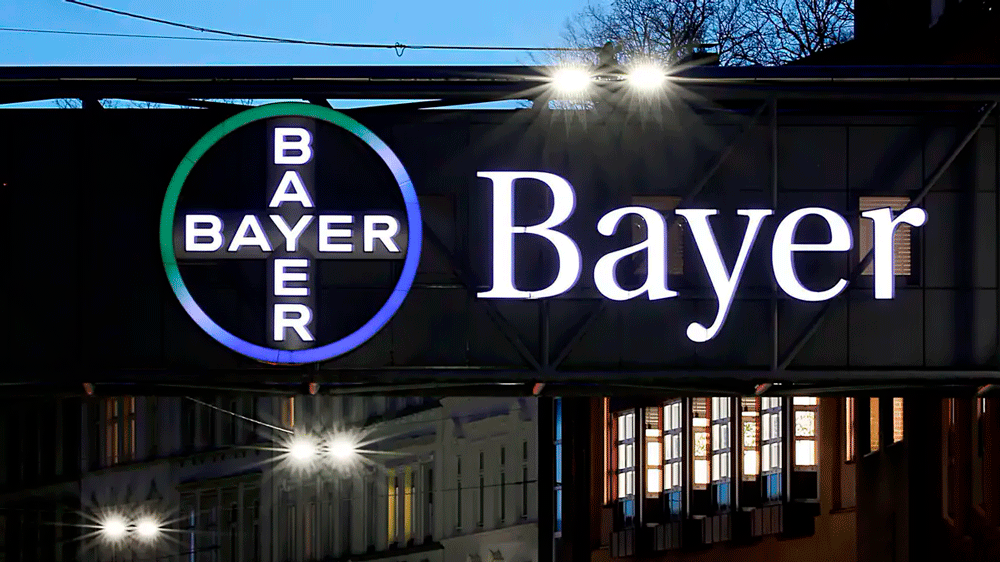
BMW
The iconic car manufacturing company BMW was established in 1913 as RAPP Motorenwerke, specializing in the production of aircraft engines.
In 1916 it changed its name toBayerische Motoren Werke, or simply BMW.
The logo design appeals to the Bavarian flag, which alternates between blue and white diamonds.
It also evokes an airplane propeller spinning at high speed, representing the company's value, legacy, and roots.
BMW's most recognizable and distinctive logo was created in 1997 and will remain official until 2020.
But even after the introduction of the new design in 2020, the old badge still remains on the hoods of iconic German cars.
In 2020, the company went minimalist and redrew its logo in 2D, eliminating the black color.
The emblem now features a thin grey outline and a thick white frame, where the grey inscription “BMW” is placed in a slightly expanded modern typeface.
The logo looks fresh and cool, reflecting the brand's progress and its willingness to move into a new era.
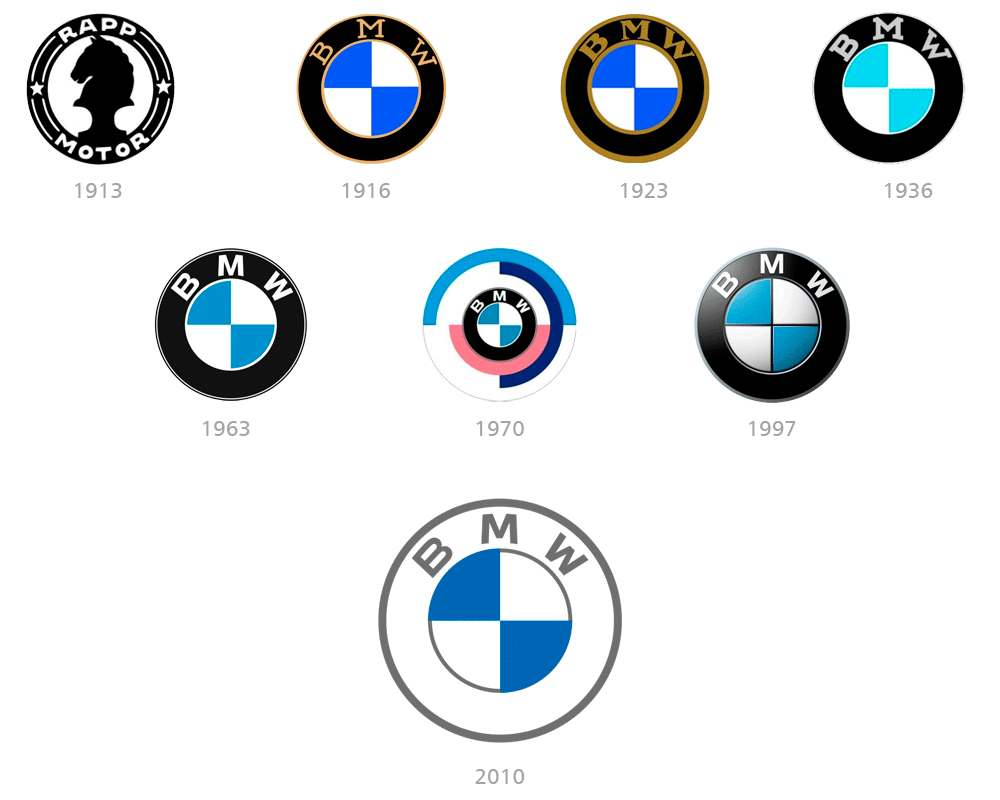
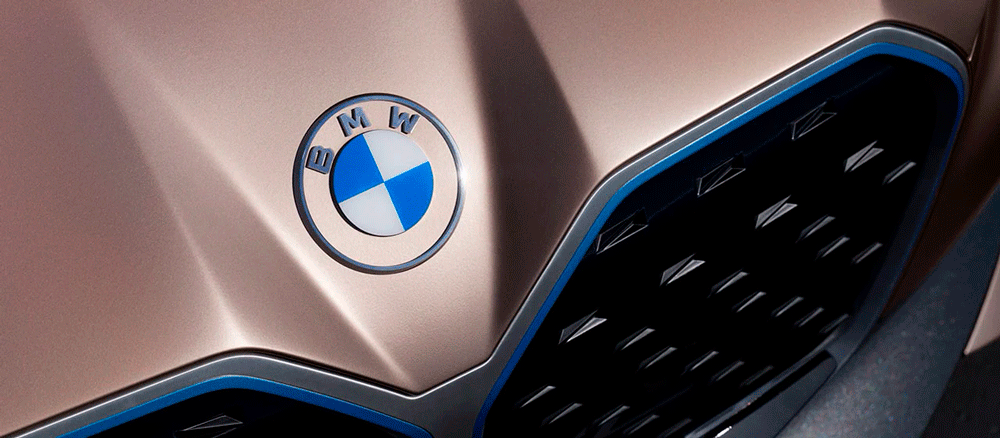
Budweiser
Budweiser is an American lager beer, first introduced in 1876
Today, the famous beer is distributed worldwide, making it one of the world's leading brands in its segment.
Known as The King of Beers, Budweiser has a striking and instantly recognizable logo, which has undergone many redesigns throughout the brand's history.
The first three versions of the beer logo were highly ornate, based on the seals and coat of arms, with many additional letters.
In 1952, it began to become more minimalist and bold, to satisfy the tastes of a younger audience and general progress.
The iconic red bow tie first appeared in 1957 and remains a staple today, with design variations that reflect the needs of the times.
The current logo is a simplified version of the previous ones.
The two-color flat design has no additional details, just the red background and white lettering.
It looks sleek, professional, and very modern, despite the use of an old-fashioned script font.
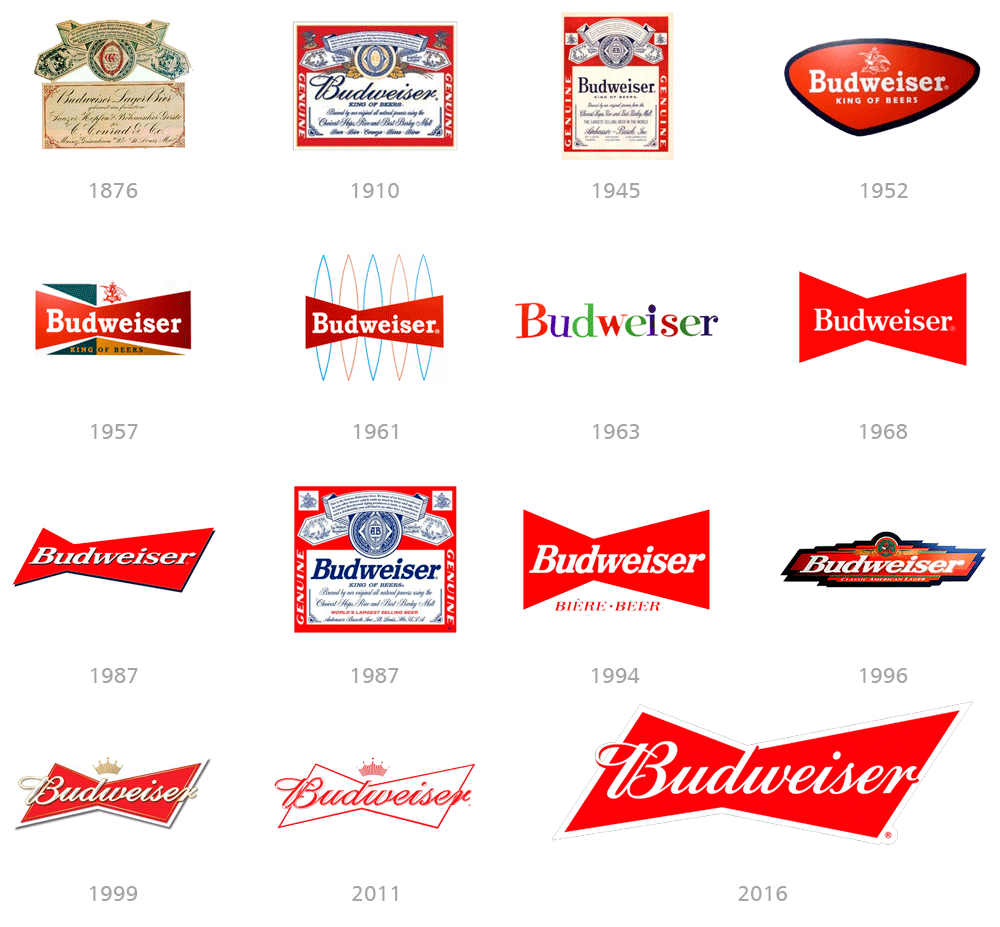
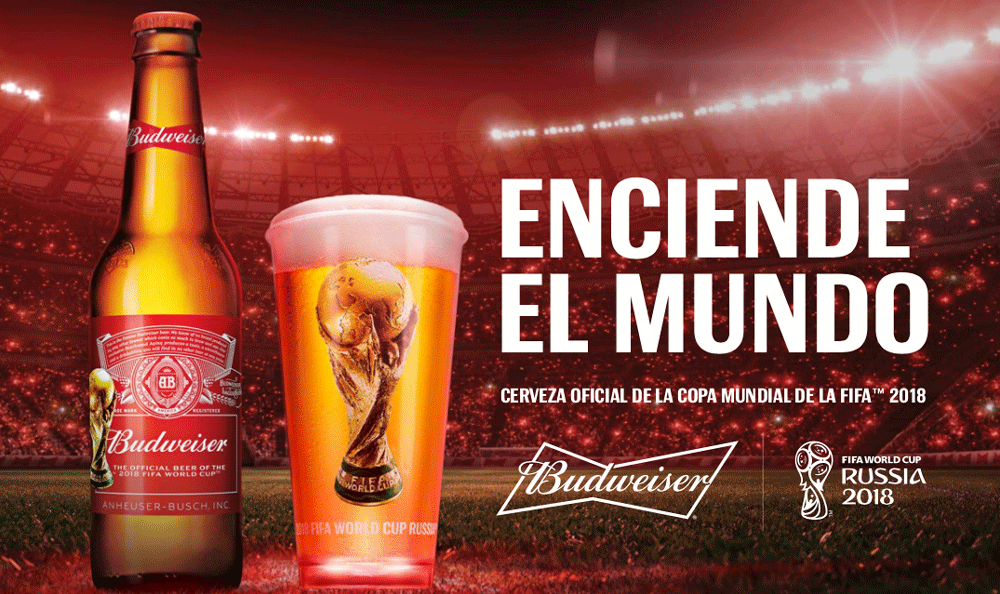
Burger King
Burger King is a pioneer in the fast food market and boasts that quality.
Over the decades, it has maintained a style consistent with its identity with very subtle changes in its design.
The 1970s marked the global rise of these companies, where hamburgers were the real stars.
The brands were quite similar in their colors, but they managed to maintain their identity and branding concepts.
Burger King's recent 2021 logo redesign returns to a more minimalist design closer to its 1969 logo.
It seeks to project a more realistic and appealing image of food, evoking that sense of nostalgia and authenticity from the 1970s.
It presents a more modern and clean image, eliminating unnecessary details and seeking to connect with the brand's history and memory.
The warm, bold color palette focuses on tones reminiscent of grilled food, creating a more authentic and appetizing look.

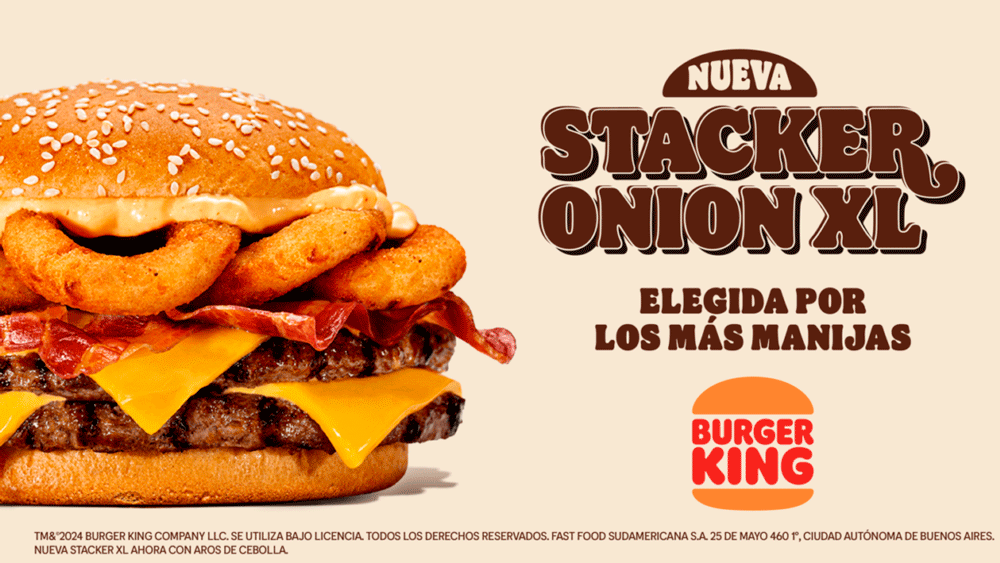
Carrefour
The name Carrefour comes from the first store opened in France, which was located at a crossroads.
That's why the company decided to name it Carrefour, which in French means "crossroads."
The logo, at first glance, symbolizes precisely the two paths.
In it you can see two figures representing arrows pointing in opposite directions, one blue and one red.
The gap between them generates a blank letter "C", alluding to the French origin of the brand.
This is one of those cases where the brand hasn't needed major redesigns and has managed to survive for decades without any notable changes.
The same concept of identity is always maintained, applying only very subtle changes.
The current logo is executed in an elegant serif typeface with its clean lines and rounded serifs.
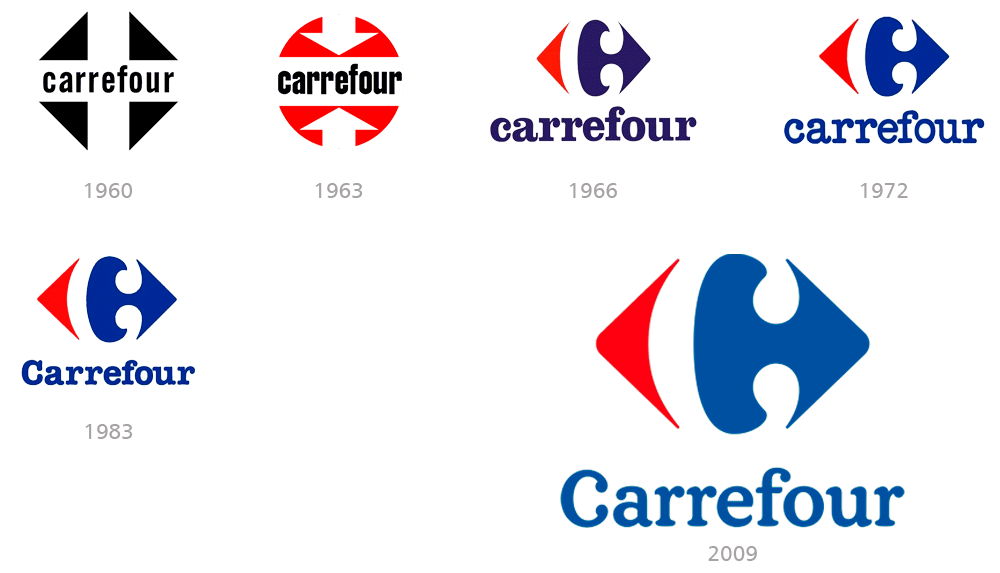
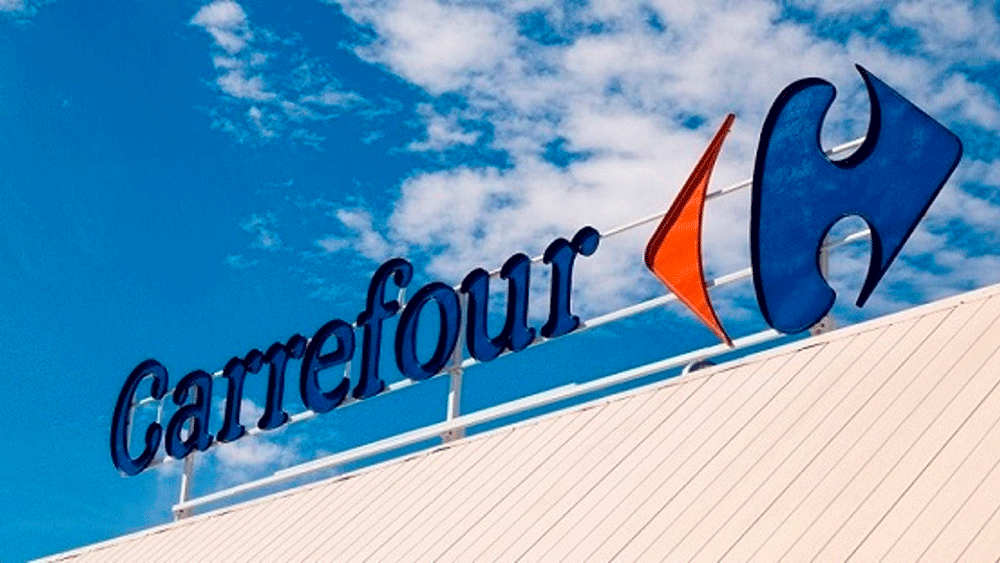
Chevrolet
Chevrolet is an American brand that was established in 1911 by Louis Chevrolet and Willian Durant.
Known worldwide as Chevy, it has an iconic logo and is considered a classic of brand identity design.
The logo is nicknamed the "bow tie" and has hardly changed throughout history.
It was designed by the brand's founder, Willian Durant, in 1913.
The Chevrolet bowtie emblem is a broad, stylized cross formed by a horizontal parallelogram overlapping a square.
Over a century of history, there have been many variations in color and detail of the Chevrolet bow tie, but the essential shape has never changed.
In 2002, a new version of the logo was created, and it is probably the most recognizable of all.
This black logo featuring a custom typeface with smooth, thick lines looks elegant on almost any background.
It can be seen in three-dimensional metal on the brand's cars, or in plain black on signs and printed materials.
The latest redesign, unveiled in 2013 to celebrate the company's centenary, maintains the emblem's gold color but makes it more luxurious by thickening the silver frame.
The logo now looks more dynamic and stronger.
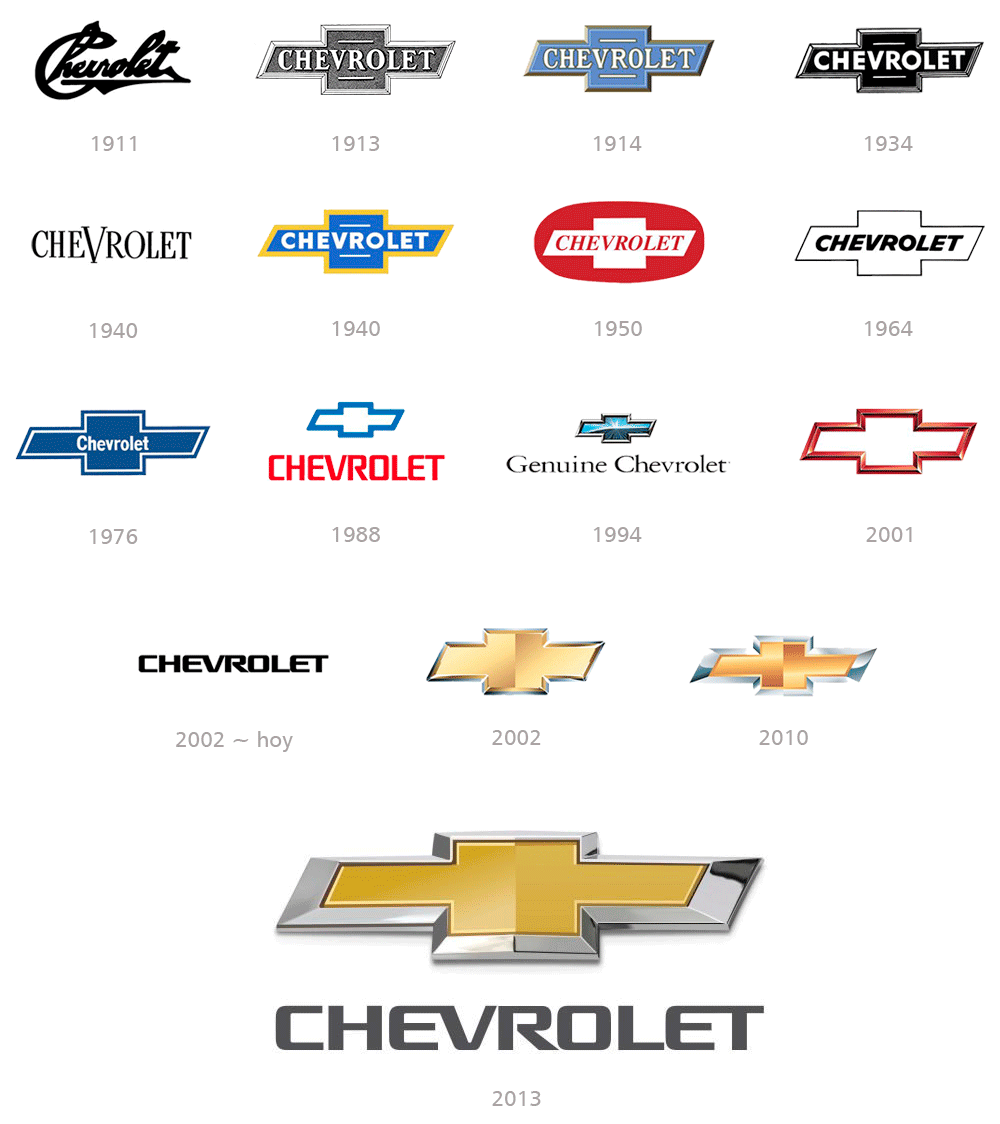
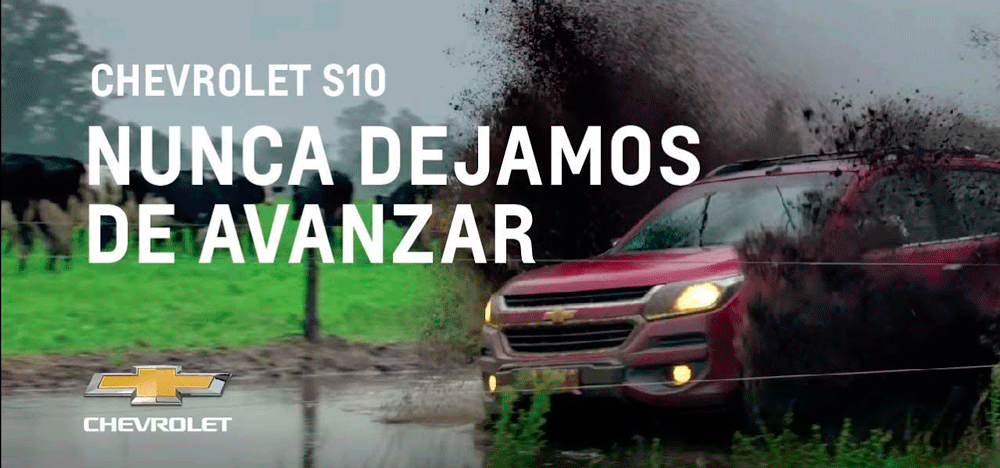
Chupa Chups
The history of Chupa Chups candies begins in Spain in 1958.
Enric Bernat is the Catalan pastry chef who was responsible for developing the idea of a round candy attached to a stick.
The idea was born from the problem that children would get their hands dirty when they took the candy out of their mouths.
That's why he came up with the idea of developing a novel candy packaging with a new logo that would give it international exposure.
It was then in 1969 that Enric Bernat turned to his friend, the great surrealist artist Salvador Dalí.
Dalí's idea turns out to be extremely simple: place red letters on a yellow background in the shape of a daisy flower.
The peculiar artist agreed to design the brand in exchange for a million-dollar fee, which Enric accepted.
Dalí thought for a while and began to scribble until he designed the daisy logo on a paper napkin.
It took no more than an hour to create one of the most iconic logos of all time.
A novelty was the introduction of the flower shape that surrounds the logo, which turned out to be one of Chupa Chups' clearest identifying features.
Dalí recommends placing the logo at the top of the packaging to enhance its visibility and give it its own personality.
But the most important thing was that when you removed the wrapper, the logo was still intact so you could save that beautiful packaging.
The Dalí logo remained in use for decades, and only in 1990 was a very subtle restyling carried out, ensuring that the essence of the brand was preserved.
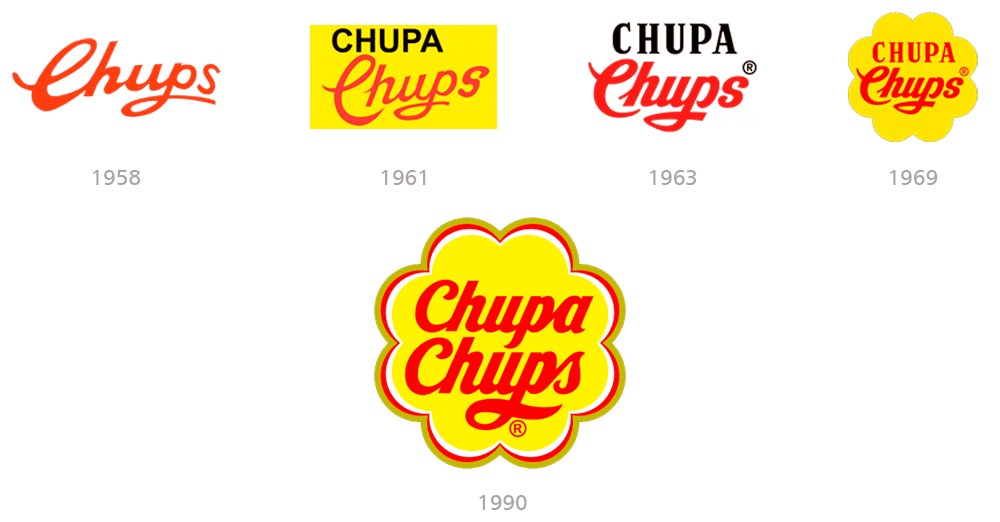
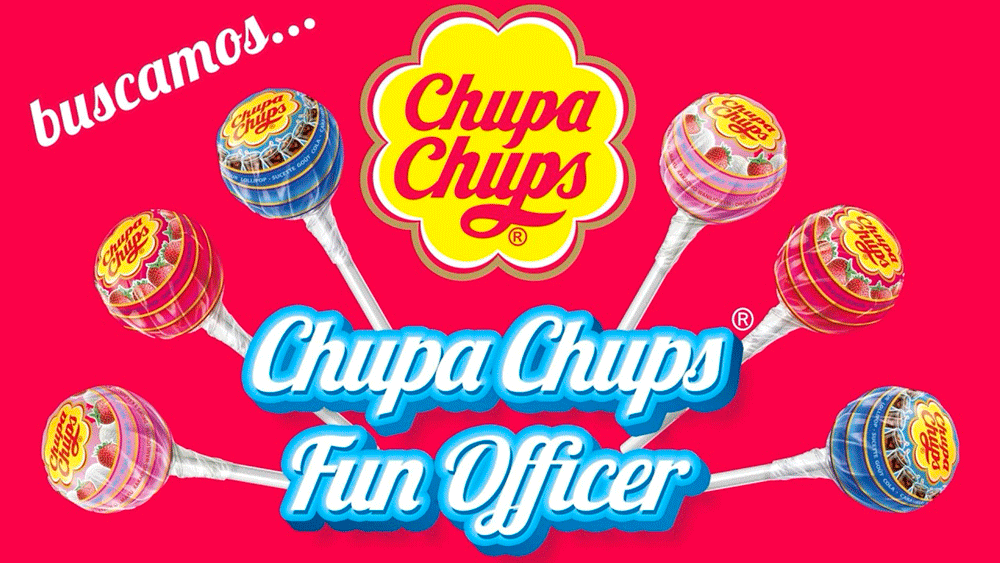
Citroën
Citroën is a French brand of automobile manufacturing company, founded in 1919 by Andre-Gustave Citroën.
The original Citroën logo was created in 1919 by the brand's founder.
His family business, Engrenages Citroen, initially specialized in the design and production of helical gears.
The original Citroën badge was composed of oval-framed chevrons, executed in fine lines resulting in a sophisticated and lightweight brand logo.
In 1929, the only version of the logo was created where an additional graphic element was added: a white swan with two chevrons and a blue underside, symbolizing water.
This is the first time the wordmark appears in the logo.
In 1959 the logo was redesigned with a modern approach.
The wordmark disappears and the stripes are now three-dimensional, and the brand concept begins to take shape in the identity we know today.
Around 1985, the logo's color scheme changed dramatically, and the emblem consisted of two white stripes in a red square.
The wordmark is now larger, with clear, confident lines in black.
In 2009, the stripes became three-dimensional again, with a color change from black to gray, giving a metallic effect.
The 2022 redesign creates a crisp, geometric logo that returns to the brand's initial concept, with a clean, futuristic style.
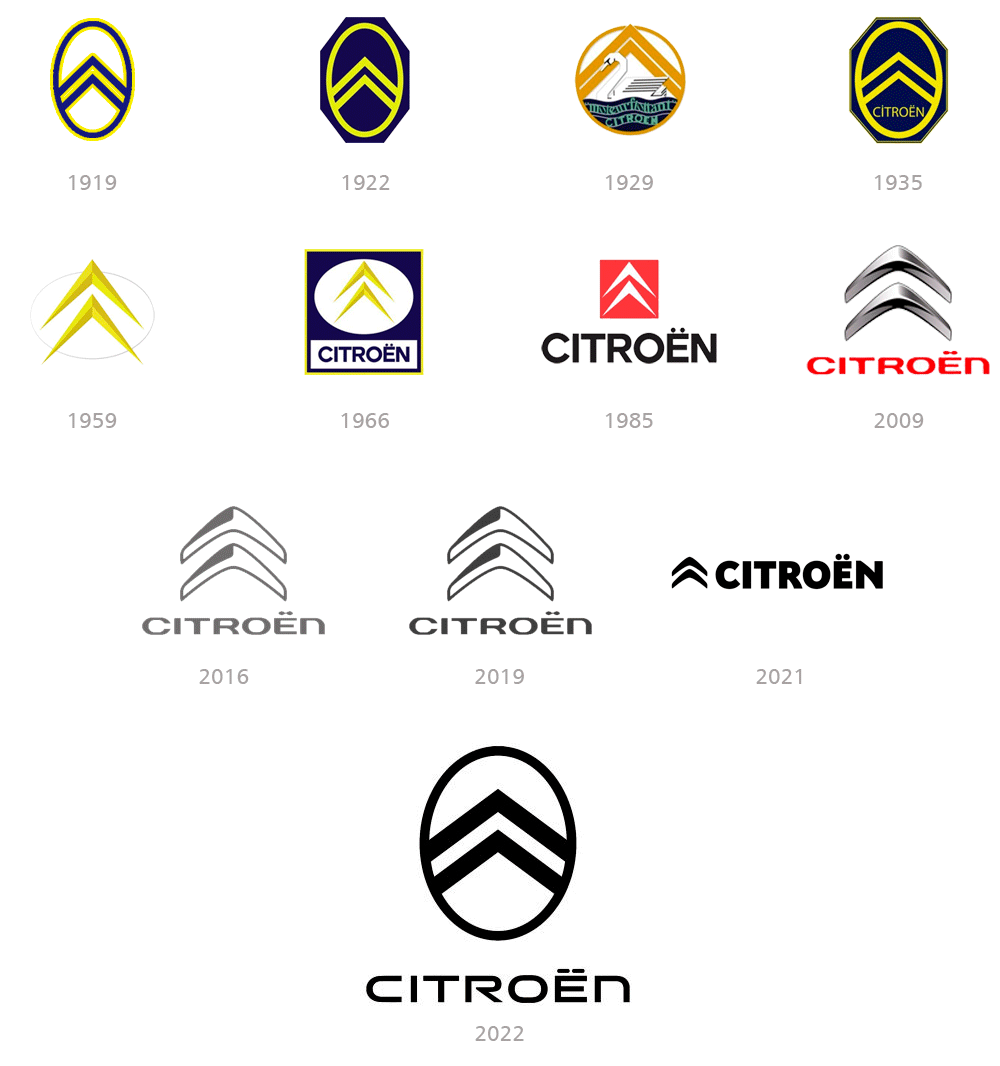
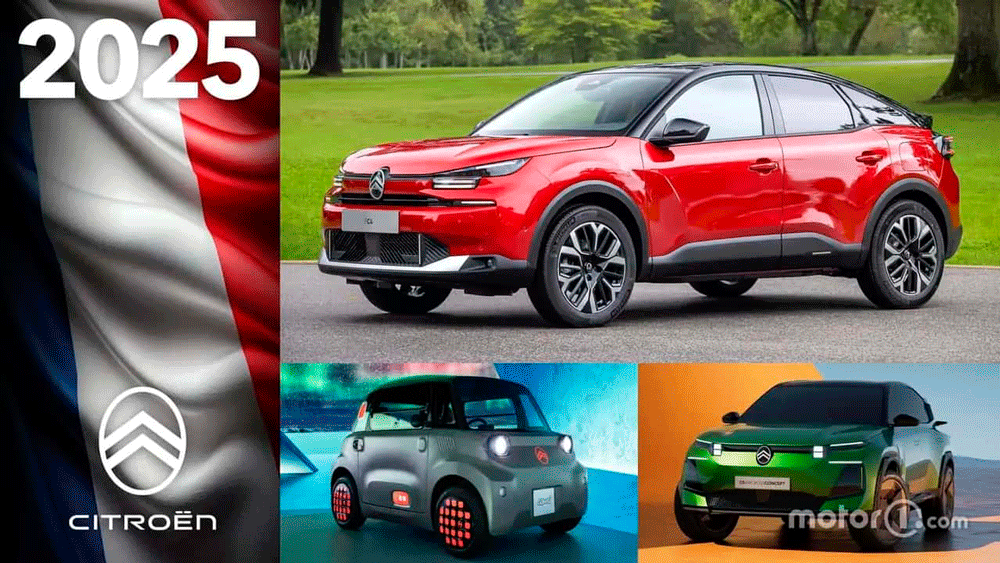
Disney Channel
The logo designed in 1981 was used by the brand for less than a year.
The geometric outline of Mickey Mouse's head is cut out of the horizontally oriented rectangle with softened contours, resembling a television screen of that era.
In 1986 the logo was redesigned, changing to black and reducing the number of horizontal lines.
Another major change was made to the wordmark, which now featured a custom "Disney" typeface representing the company's logo.
In 1997, a completely new version of the logo was created, featuring a colorful Mickey Mouse standing with his hands raised as the logo mascot.
In 1999, Mickey Mouse was removed from the emblem and the black television with rounded ears was now purple.
In 2002, the company decided to become minimalist and laconic, maintaining the main features: the unique lettering of "Disney" and the outline of Mickey Mouse.
The new color palette makes the logo look fresher and sharper, allowing it to be placed on various backgrounds.
In 2014, Mickey Mouse's head was replaced by the dot over the letter "I" in "Disney."
The wordmark is now the sole element of the company's visual identity, signaling the company's forefront in the entertainment industry.
Disney Channel is undergoing another redesign in 2024, following the international trend of minimization and simplification.
The iconic Disney logo is rewritten in black, with the letters on a white background without any additional graphics.
For the first time in the company's history, there is no reference to Mickey Mouse.
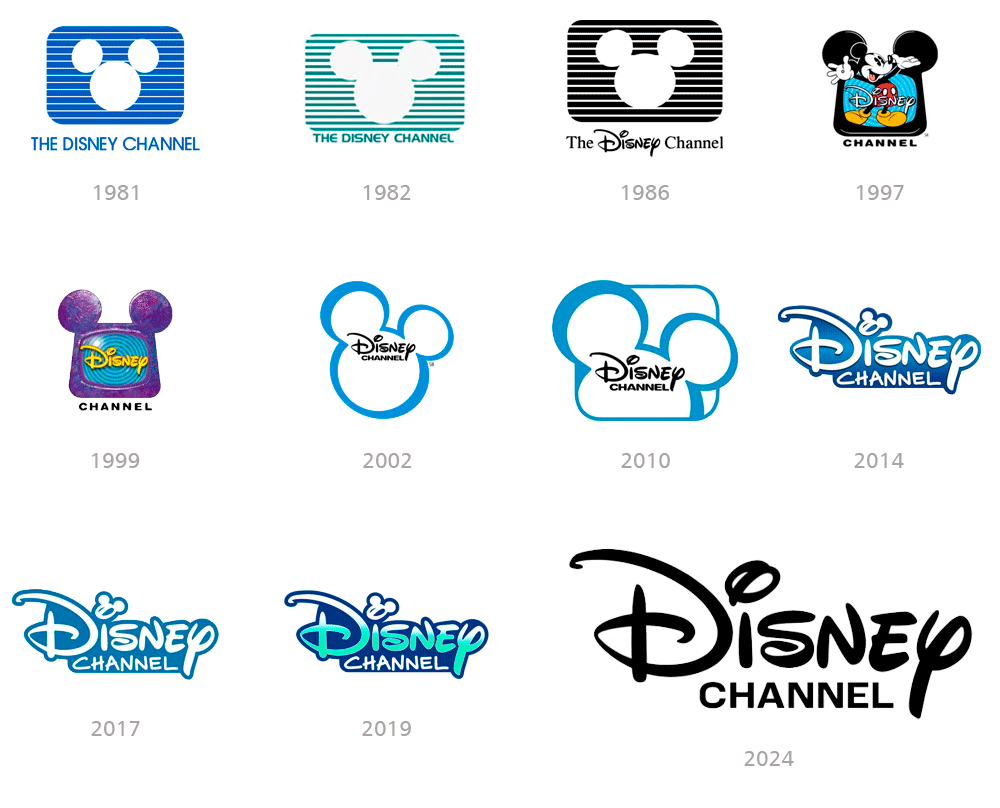
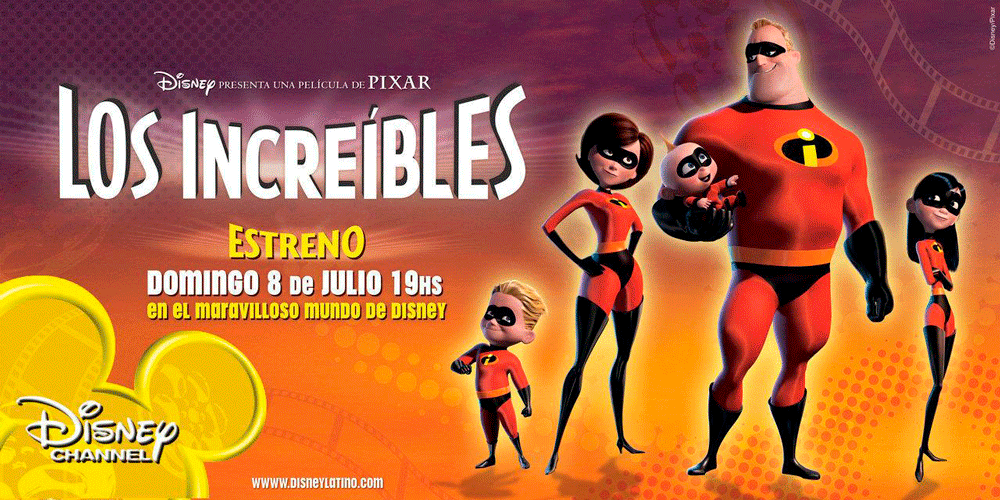
Fanta
The Fanta logo has evolved to reflect the brand's evolution and focus on fun and innovation.
The first logo is a sleek black design with a distinctive “F.”
It then evolved until the 1980s, when it introduced a color combination of blue, orange, and green, with a clear, pared-down typography.
Already close to the 2000s, there was an attempt to play with brush typography and include the concept of the orange in the brand.
In 2023, Fanta launched a new global identity, unifying its image worldwide with a more modern and simplified design.
It uses angular typography and vibrant colors, seeking to inspire joy and a thirst for adventure, motivating people to take risks and enjoy life.
It no longer focuses its image on oranges, as the brand markets different flavors.
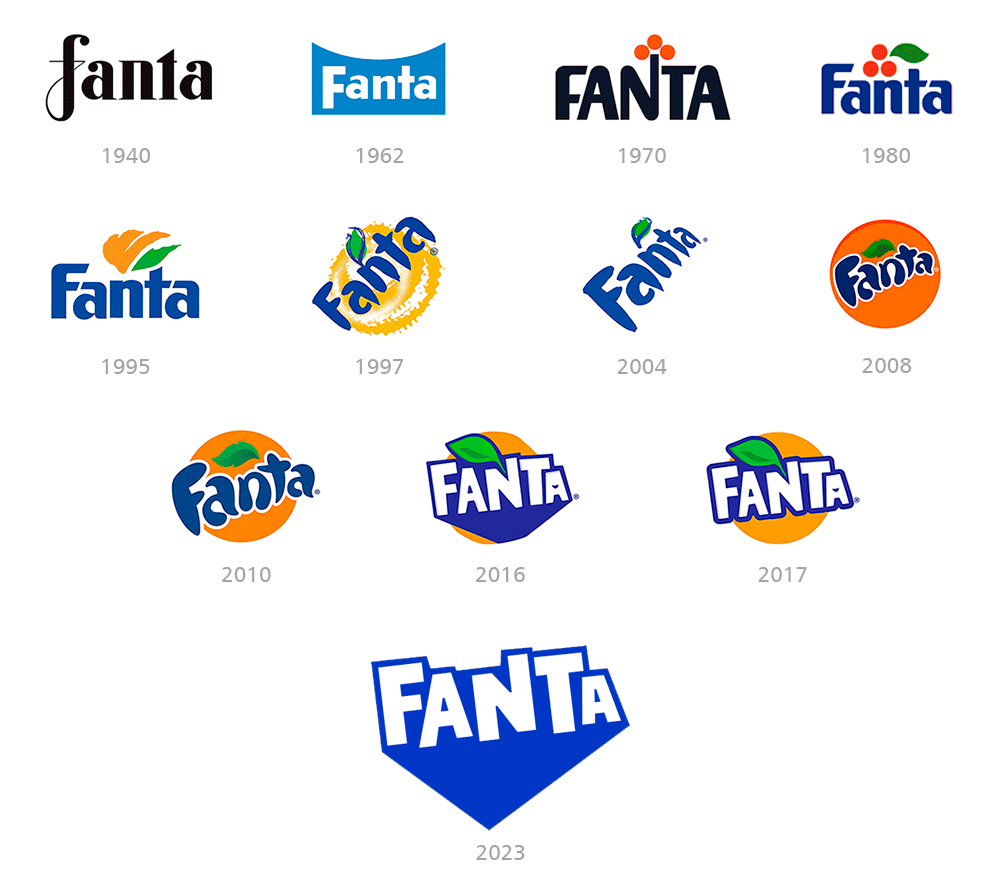
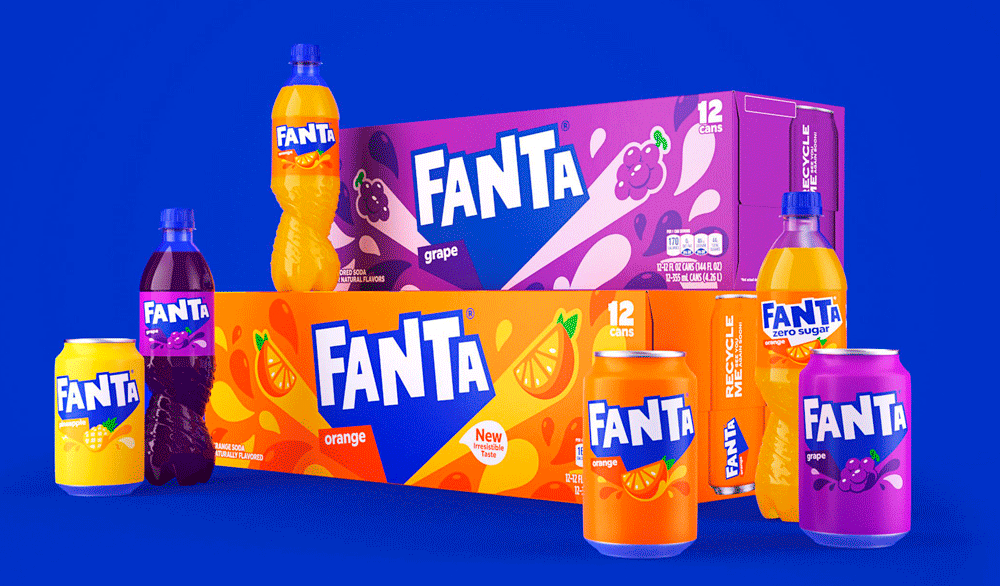
FedEx
The earliest FedEx logo reflected the original company name Federal Express.
The main reason why its founder Fred Smith chose this name was that he wanted to get the Federal Reserve Bank as a client.
Additionally, he assumed that the word “Federal” might give the company weight by emphasizing patriotism and the desire to contribute to the country's economy.
The current logo was designed by Landor Associated in 1994 and is one of the most iconic brand designs in history.
Its main detail is a white arrow pointing to the right, formed by the negative space between the letters "E" and "X"
This is a subliminal message that shows the essence of the company and evokes a sense of movement.
The design has been so effective that it remains relevant today, surviving all the changes brought about by the digital age.

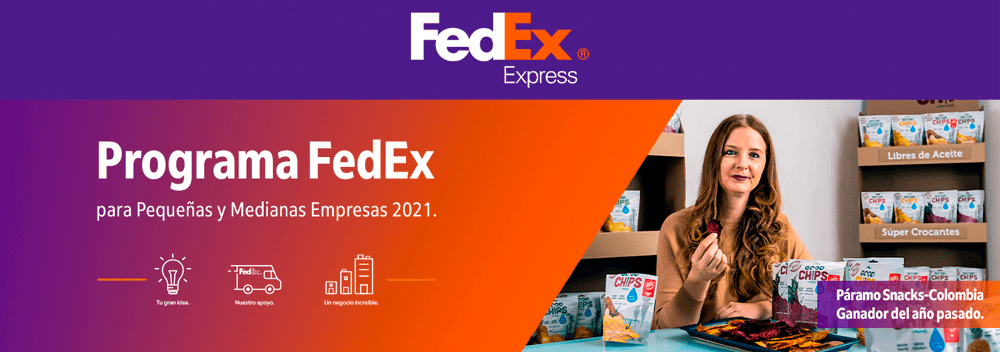
Ford
The Ford logo has become one of the most recognizable logos in the automotive industry.
In 1903, the first Ford Motor Company logo was created and consisted of an ornate, rounded badge in a frame with leaves and curves.
In 1907, Ford decided to change its style to a modern and strong one, with a completely new style and shape: the diamond with soft rounded angles has a black "Ford" inscription in the middle.
In 1911 the company redesigned its logo with the founder's signature enclosed in a double horizontal oval, and the inscription "The Famous Automobiles"
This design begins to hint at the definitive features and its oval design that remain to this day.
The 1965 design is a narrow, horizontally stretched oval in a soft blue color palette, with a simplified double outline in blue and white.
This version is still used in most vehicles and has become the three-dimensional model used for certain applications.

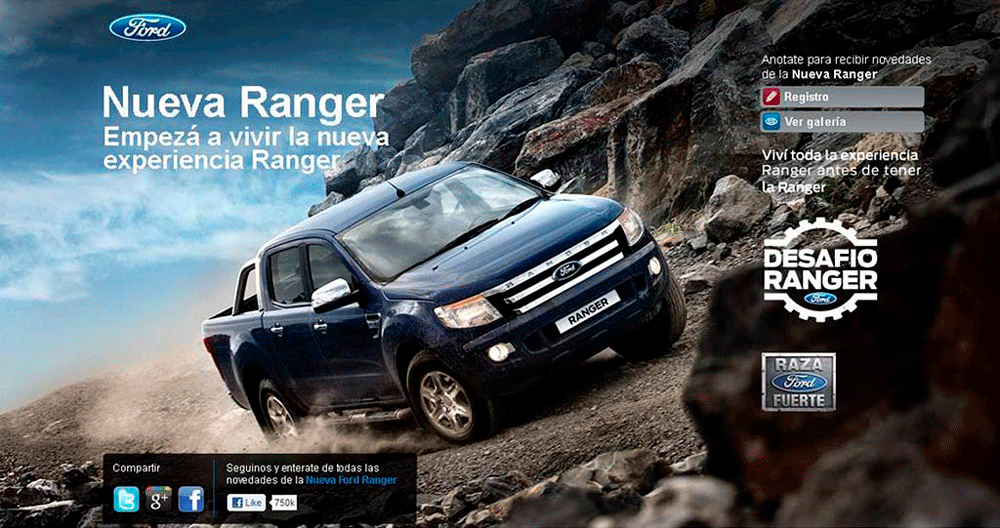
Gatorade
The original Gatorade logo was introduced in 1966 and features monochrome lettering on four levels.
It was more of an official badge than a label, strict and simple.
The 1970 rebranding brought an iconic, colorful symbol to Gatorade's visual identity.
The logo consists of a green wordmark with a black outline, enclosed in an orange rectangular frame, with an orange light beam passing through it.
It also has a blue slogan"Thirst Quencher" placed below the branding inside the frame.
Since the 1970 redesign, the Gatorade logo hasn't changed much, and the lightning bolt, a distinctive feature of the logo, has always been retained.
In 2009, a completely new concept was introduced with a responsive logo.
The wordmark is optional and is replaced by a large "G" that is now the main element of the visual identity.
This initial is crossed by a ray of orange light with a double red and black outline.
It has no additional details or gradient tones, just a smooth, flat logo composed of two symbols.
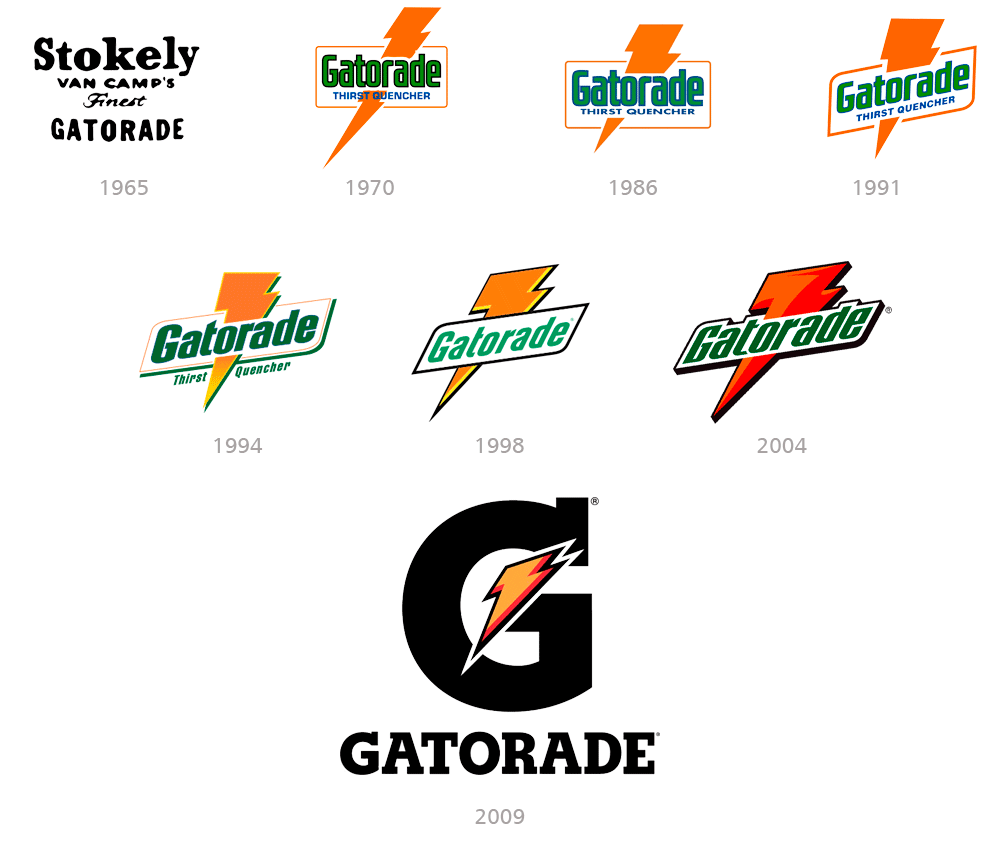
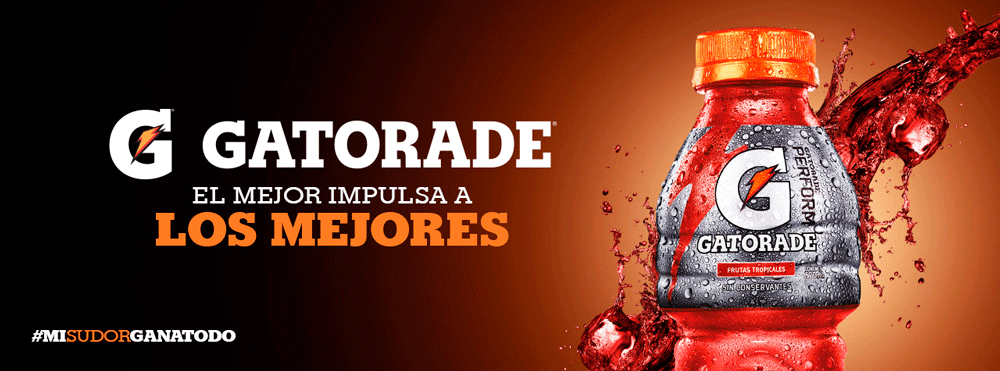
Google is the world's most popular search engine with the widest range of languages.
It was created by Sergey Brin and Larry Page, students at Stanford University.
The prototype of today's Google symbol appeared in 1997.
Since then, it has undergone some tweaks and modifications, but the concept has remained the same.
In 1998 the logo acquired its current color palette using blue, red, yellow and green.
Google's iconic color palette, composed of four hues, represents the four main elements: air, earth, fire, and water.
It also represents the variety of Google services and shows its endless possibilities.
The colors red, blue, yellow, and green are used for all of the company's service marks, showing unity and connection.
The Google logo is subject to Google Doodles, which are temporary modifications that appear on the platform's homepage during holidays or to celebrate important events and/or historic achievements.
In 2015, the Google logo was redesigned again, leaving the characteristic color scheme intact but changing the style and shape of the letters.

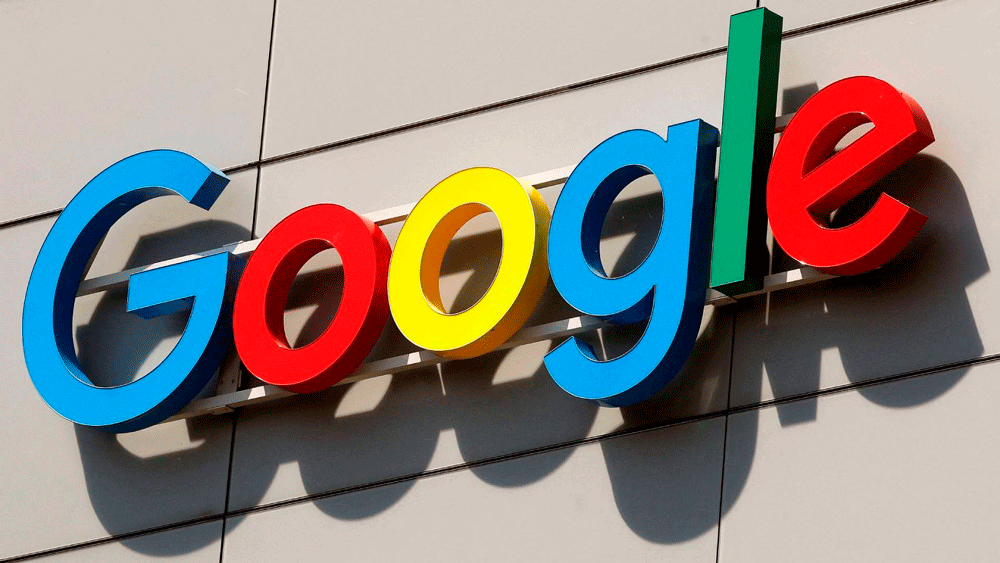
Heineken
Heineken is one of the most popular beer brands in the world.
The initial logo from 1864 was a blue oval as a badge.
The gray space in the middle contains a drawing of the brewery itself, along with a few words explaining exactly what product they make.
In 1884, the oldest known logo for the beer was designed in an oval shape with a thick green frame on a white outline.
The central part of the emblem contains a black horizontal band with a wordmark, the black outline of a five-pointed star, and a thin green ornament below the band.
From that year on, green became the brand's institutional color.
The most recognizable symbol used in the Heineken logo is the red star.
In those days, brewing beer was considered an extraordinary and magical process.
The five-pointed star symbolized the four elements and the 5th magical element that determined the quality of the beer.
In the 1954 redesign, the label finally began using only the white "Heineken" lettering, set within a black horizontal ribbon bar.
In 1974, the main wordmark was introduced with the name in green and the typography that remains to this day.
In 1991, the second official logo was designed with an elegant and instantly recognizable green script with a solid red star, positioned to the left or above the lettering.
Sometimes the brand uses only the star, in other cases, the white wordmark on a black ribbon, with the red star above and a green leaf ornament below.
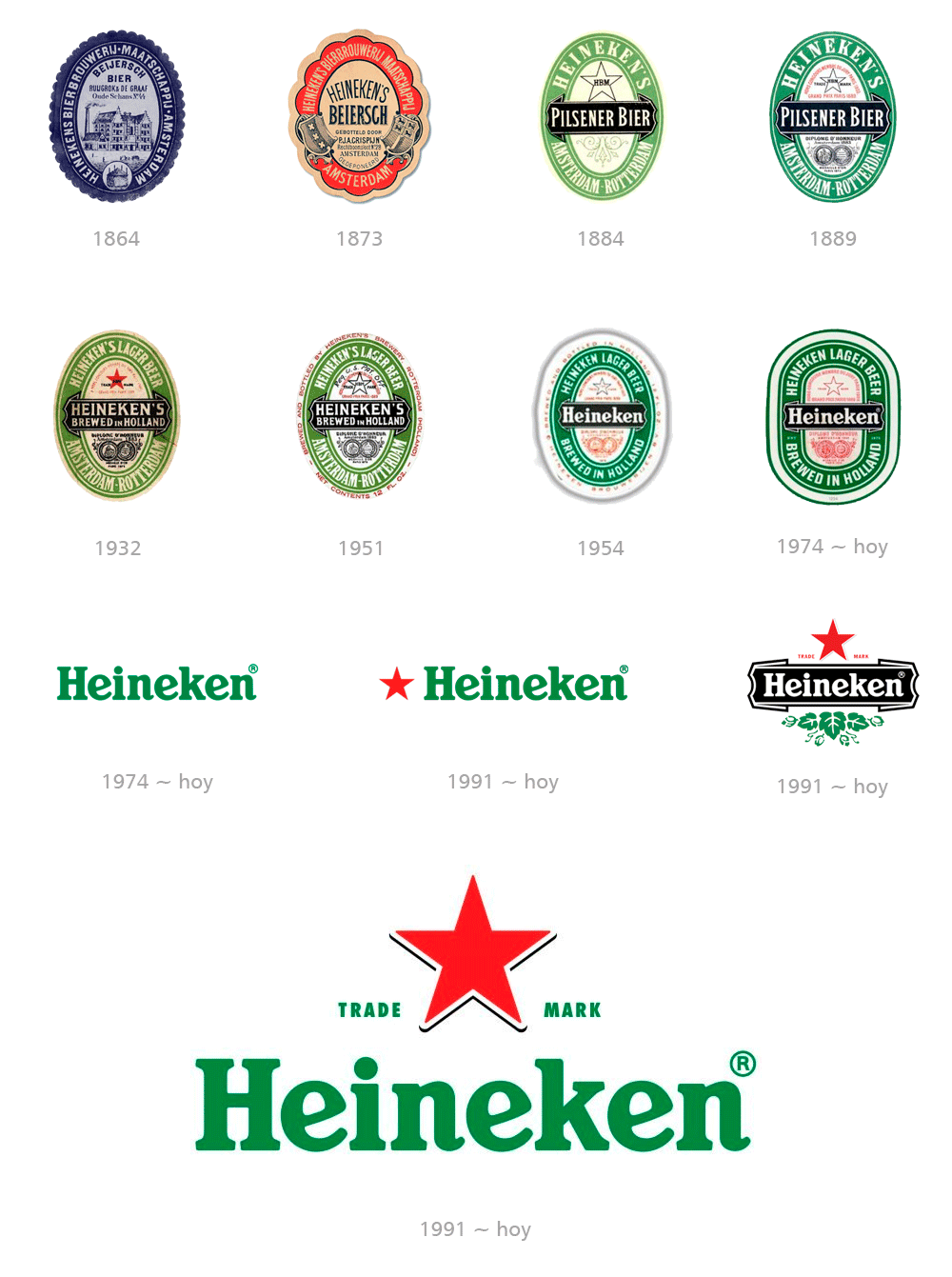
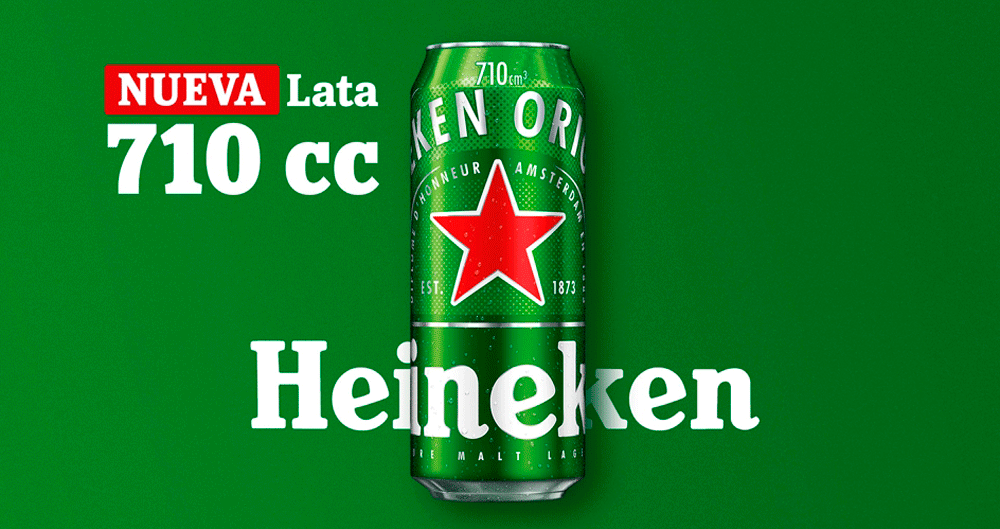
Iberia
The original 1927 design is the most minimalist, with only the capitalized word "Iberia" represented.
In 1939 it was replaced by a winged logo and incorporated colors of the Spanish flag.
It later evolved into a wordmark in 1941, followed by elaborations on the balloon theme in 1954, 1963 and 1967.
In 1977, the era of the stylized design of the "IB" isotype began.
The abstract shape of the current logo, introduced in 2013, indirectly references the "IB" but this time focuses on representing the tail of the plane.
It has an incredibly modern, dynamic, and memorable style and places the company in a prominent place in the airline market.
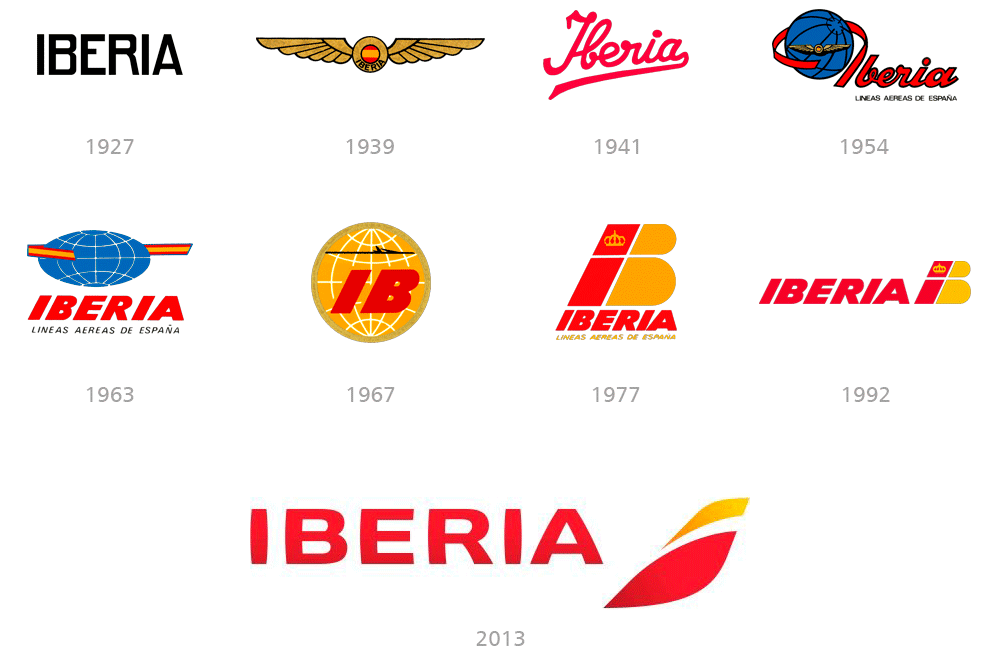
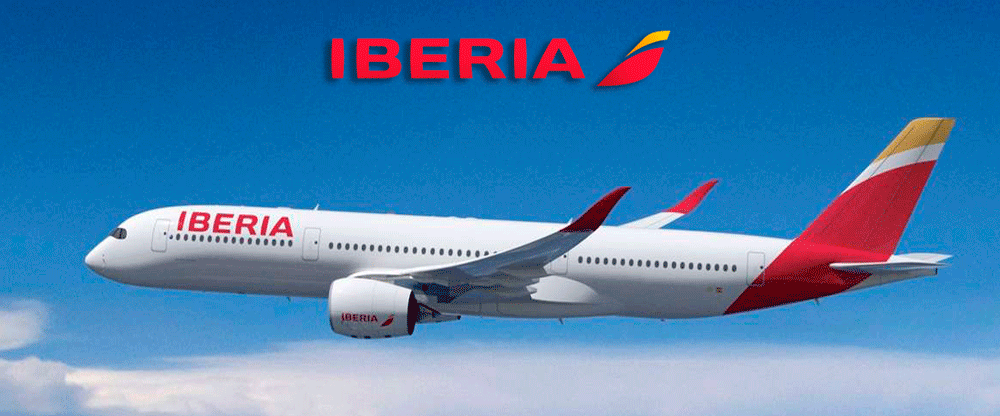
IBM
IBM is a world leader in software and hardware production, as well as providing a variety of support and consulting services.
The company is established as a result of the merger of two businesses: International Time Recording Company and Computing Scale Company.
In 1924, the company changed its name to International Business Machines and the new logo was stylized as a globe.
In 1947, International Business Machines simplified its name under the acronym IBM, with a minimalist blue logo with capital letters executed in a massive, square serif typeface.
This design will be the pillar for future restylings of the brand.
The first version of the iconic striped IBM logo was designed in 1967 by modifying the previous emblem, where the blue inscription is cut horizontally into 13 equal strips.
In 1972 Paul Rand carried out the redesign that lasts to this day, reducing the number of lines to eight.
In 2018, the company decided to return to its original full logo from 1956, but now it is a white "IBM" inscription, placed on a dark gray background, and is used in minimalist occasions that require better legibility.
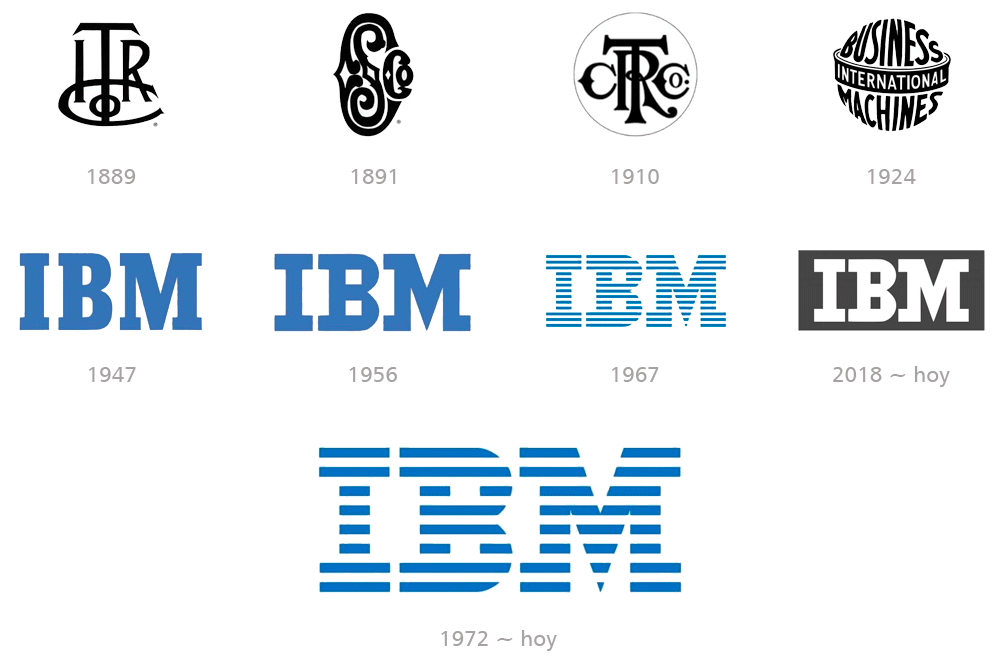
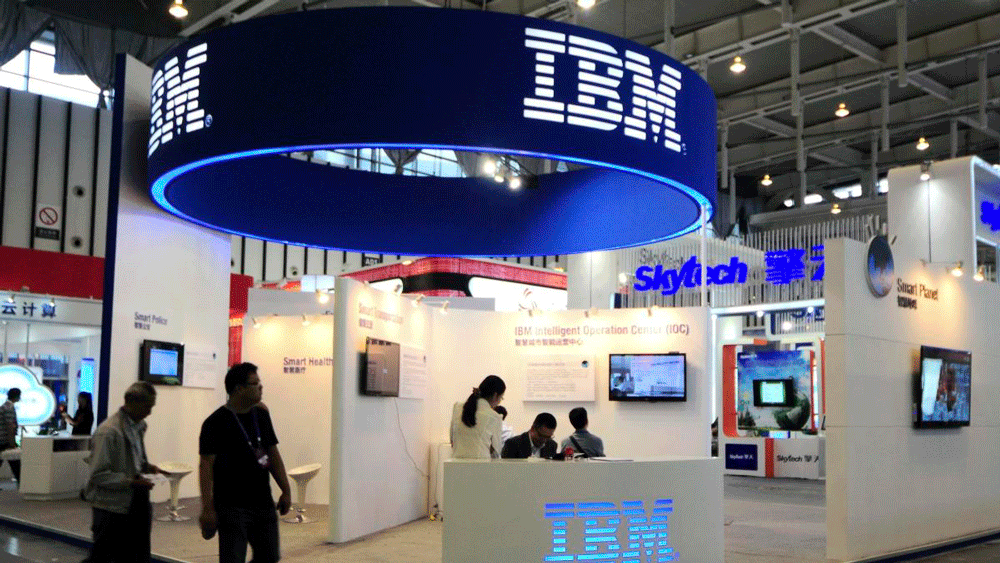
Instagram is one of the most popular social networks, with more than a billion users worldwide.
Throughout its short history, the company has redesigned its logo on a few occasions.
All based on the shape of an instant camera, versions of the Instagram logo have reflected the network's key designation: photo sharing.
In 2016, Instagram unveiled its new logo along with an updated app interface.
While many users criticized the design, it has remained unchanged for years.
The new version's sleek, minimalist design is based on the previous badges, but redrawn in an abstract, flat form.
The orange to pink gradient square with rounded corners has a bold camera outline drawn over it in white.
The 2022 redesign features a refreshed version of the 2016 logo, refining its color palette while maintaining the same concept and shapes.
The new logo also runs in orange to purple gradients, but all shades have been made lighter, so the icon now looks even brighter.
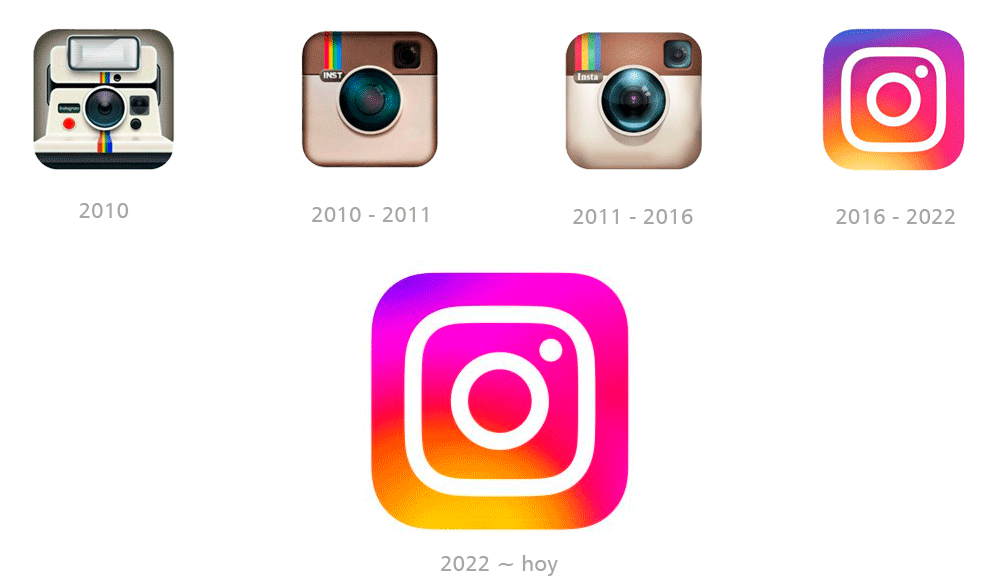
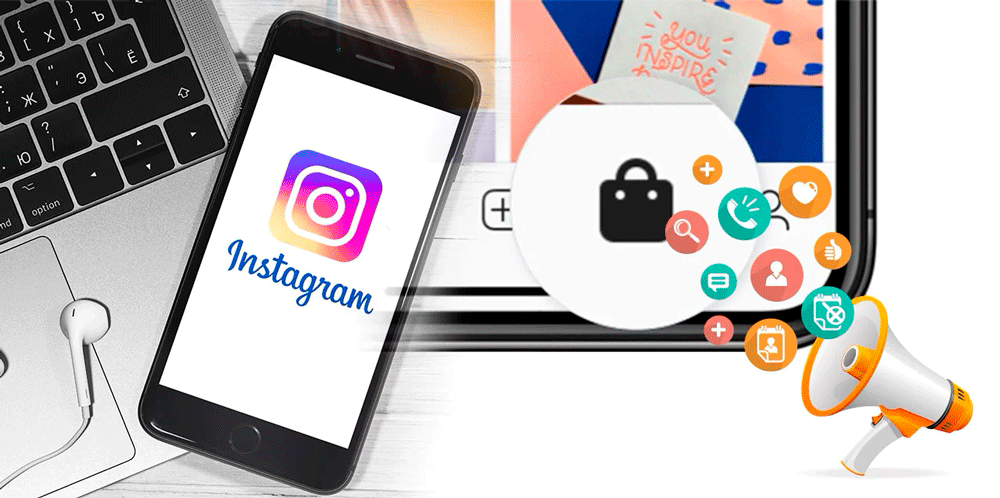
Jaguar
The luxury brand Jaguar, founded in 1922 in the United Kingdom, is famous for designing and manufacturing high-end automobiles.
The first versions of the Swallow Sidecar company logos were winged emblems and used the SS monogram, but later took on negative connotations due to its similarity to Nazism.
The 1951 redesign completely simplified the Jaguar badge, turning it into just an all-caps logo.
The black lettering is executed in an elegant full-form font with thick lines of the letters and thin, elongated serifs at their ends.
In 1957, a notable restyling took place and the image of the big cat that would identify the brand to the present began to appear.
The leaping jaguar logo was introduced in 1982, and that concept has been stylized to the present, giving the brand a true identity.
In 2024, the company will undergo a complete redesign of its logo, which has been highly controversial, as many believe its essence and identity have been lost.
These are the risks involved in trying to boast about being modern and cutting-edge by making radical changes and trying to impose the company's vision over customer preferences.
It only remains to wait and see what time brings in the assimilation and acceptance of such drastic changes.
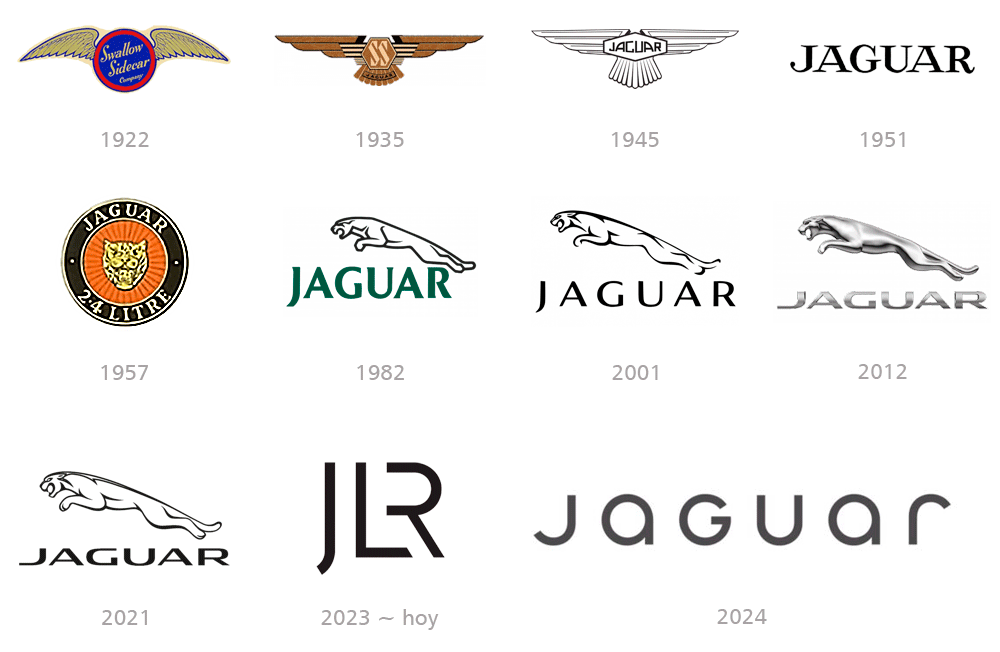
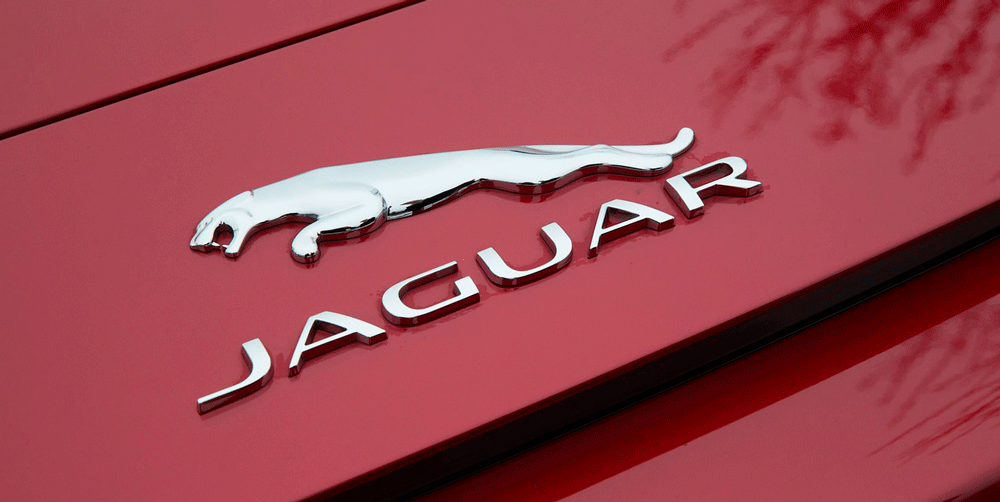
KFC
The fast-food restaurant chain KFC, which specializes in fried chicken, has more than 20,000 restaurants worldwide.
The KFC logo has always followed the same principles: color palette and the portrait of its founder.
The logo has been redesigned five times throughout its history, but this is definitely not a change, but rather an evolution.
The original KFC logo was designed in 1954 and features the “Kentucky Fried Chicken” wordmark in a handwritten font.
In 1991, it changed its name to KFC, its design changed drastically, and the color red appeared in the visual identity.
In 2018, the final redesign was carried out, changing the shape to a trapezoidal one and perfecting the portrait.
The KFC logo is bright and welcoming, a perfect choice for the fast food industry, evoking a sense of warmth and hospitality.
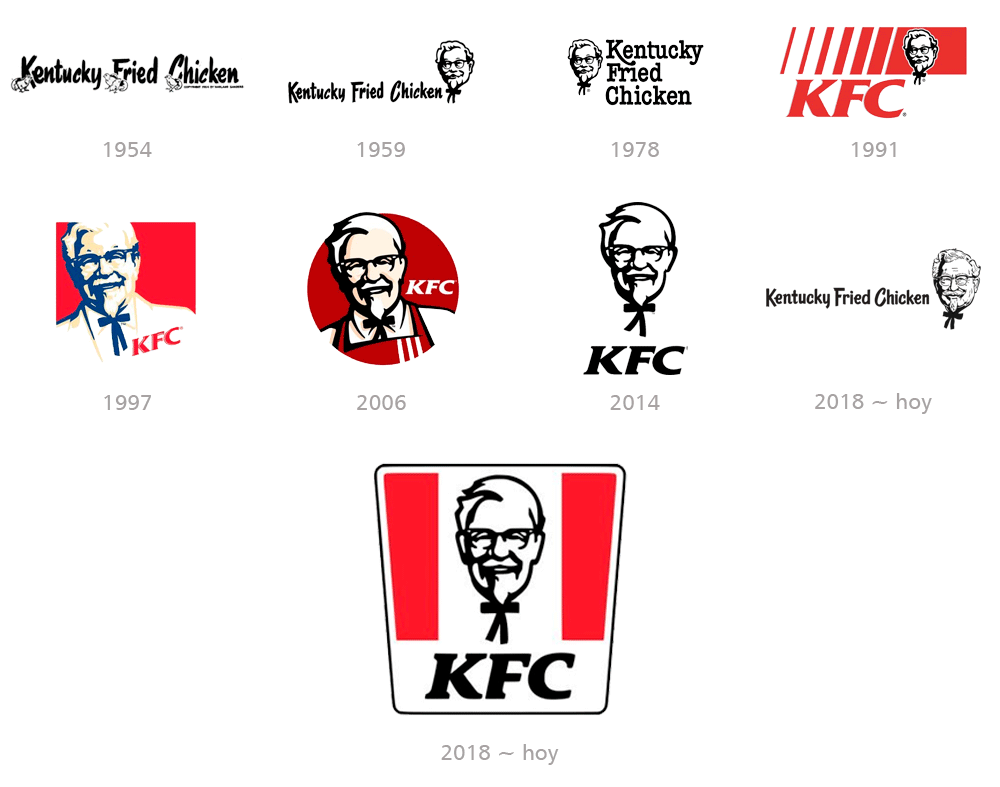
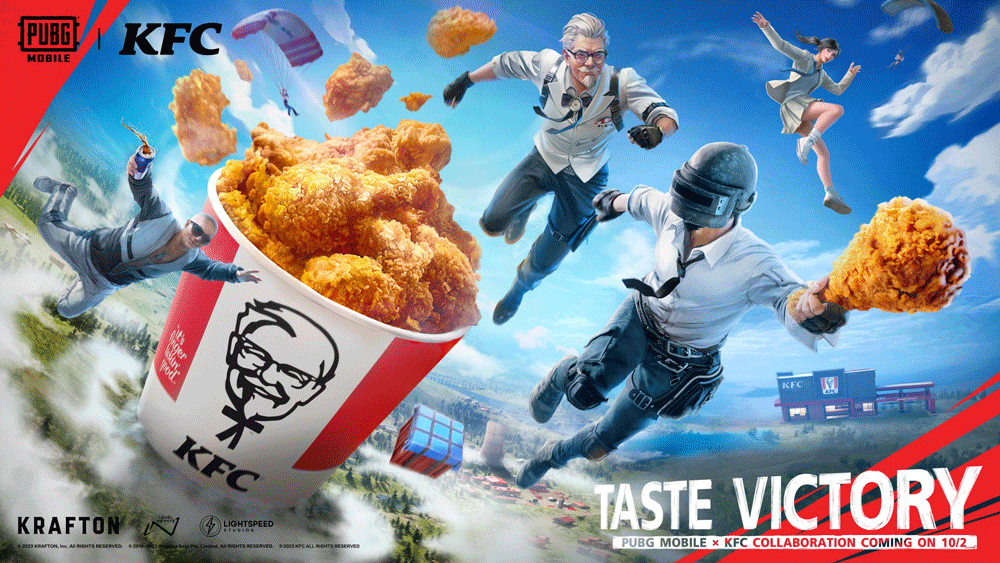
Kodak
The initial logo was created for The Eastman Dry Plate Company in 1889 and featured an elegant artistic design style badge with a black frame adorned with white lettering.
In 1907 the company was renamed Eastman Kodak Company and changed its logo to a monogram where the three letters are executed in straight lines with geometric cuts.
In 1935, the name Kodak became official and the visual identity was redesigned.
The new emblem remains with the brand for many years and becomes the basis for the current badge that everyone knows.
In 1971, the predecessor of the current Kodak logo was created.
The new emblem features a solid yellow square with an enlarged red "K" stylized as a camera positioned in profile and a yellow "Kodak" script on its right side.
In 1983, the company went minimalist and made the simple red wordmark its official logo.
That same year, the brand adopted a very different logo, using a black and white color palette that replaced the traditional red and orange colors.
The lower half of the emblem has a striped pattern that adds dynamism and interest.
In 1987, the traditional color palette was returned to in more stylized versions of the 1971 logos.
In the following years, word mark versions alternate with isologotypes.
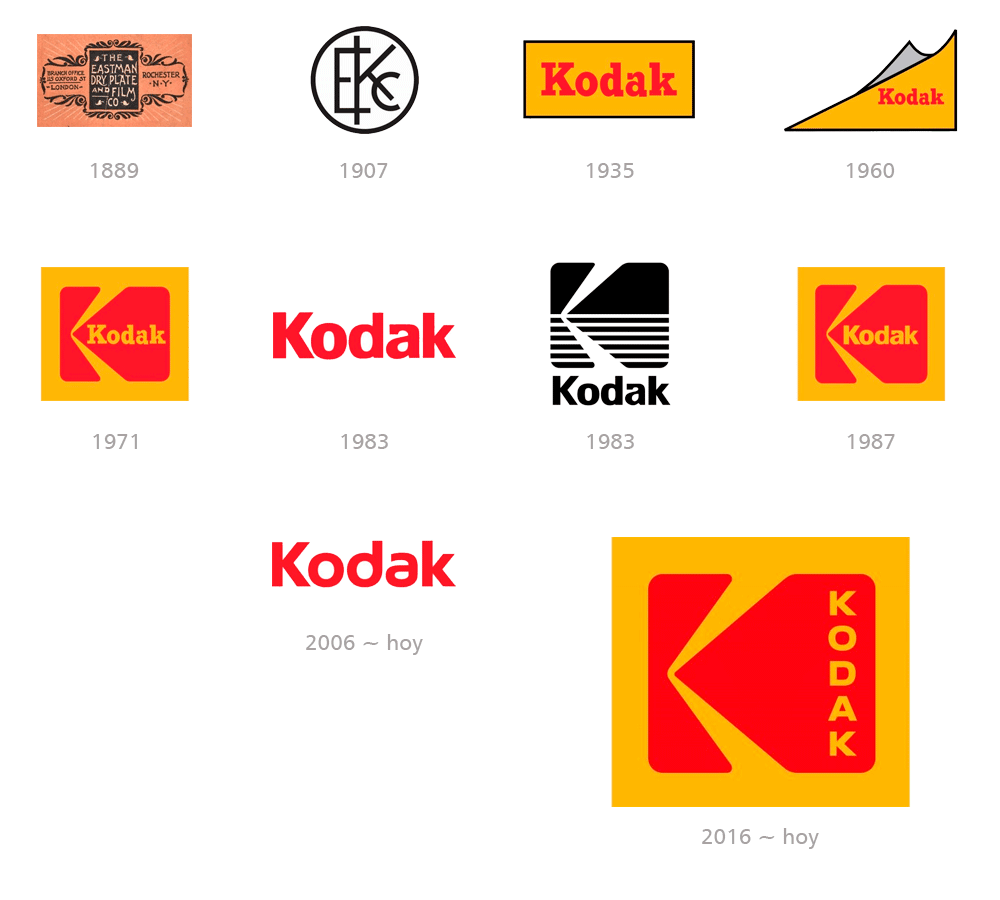
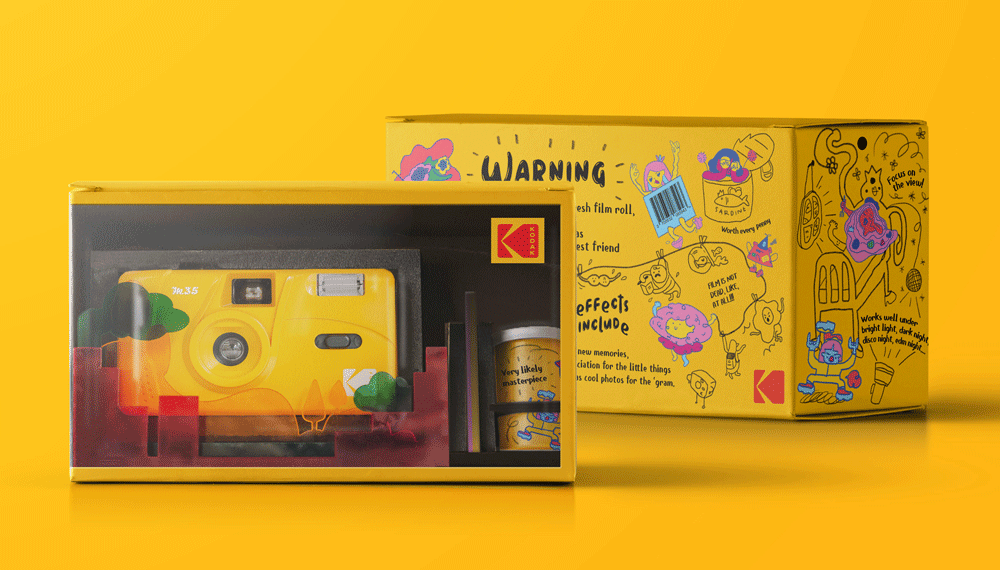
Lay’s
Lay's is an American snack brand established in 1932 and is now one of the most famous potato chip manufacturers in the world.
The first Lay's logo was created in 1932 and remains the basis for the brand's current visual identity design.
In 1997, the logo incorporated the color yellow, which was drawn unevenly, evoking the shape of a sun and also a potato chip.
The characters are refined into more traditional lines and have a blue shadow.
The red background is now replaced by a ribbon, drawn around the yellow sun.
It is the first version of the logo that we all know today.
In 2007, the logo took on a three-dimensional form, maintaining the iconic color and composition of shapes.
The 2019 redesign returns to being flat.
The logo executed in intense yellow and red still has some gradient tones, but they add more movement and dynamics than volume to the image.
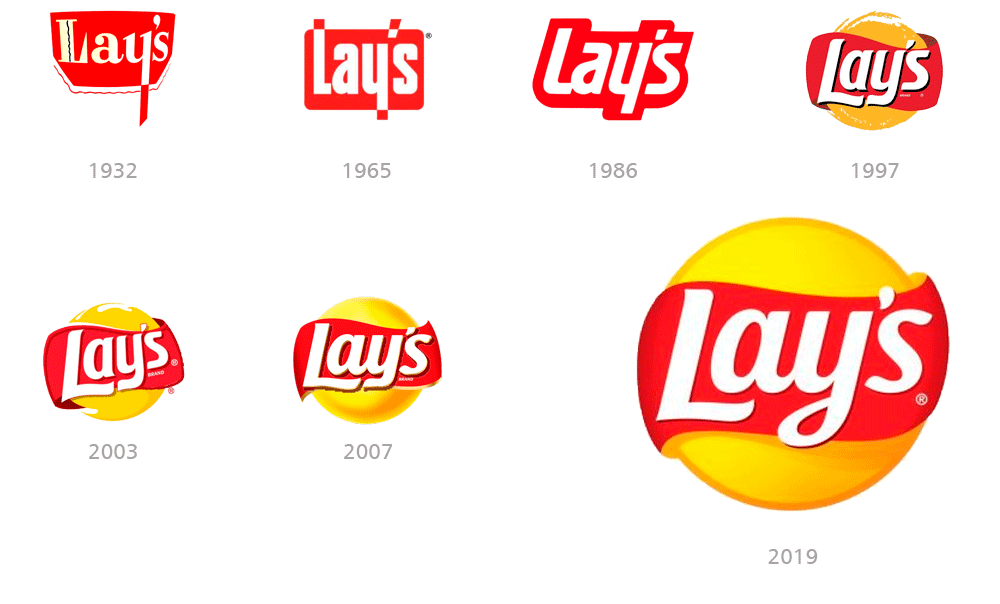

Levi’s
The Levi's story begins in 1853, but just 20 years later, the company introduced the legendary blue jeans and a patented way of securing clothing with rivets.
Its most iconic logo was created in 1892 and is still used today.
It features two men with horses pulling a pair of jeans in opposite directions, demonstrating the brand's strength and durability.
The interesting thing about this is that the illustration was added below the letters for better recognition, since many people across the United States, especially in the Old West, could not read English.
The badge we all know today was introduced in 1969 with a geometric red background with white lettering.
Its characteristic shape is somewhat similar to the wings of a bat, and represents the perfect fit of tight-fitting jeans.
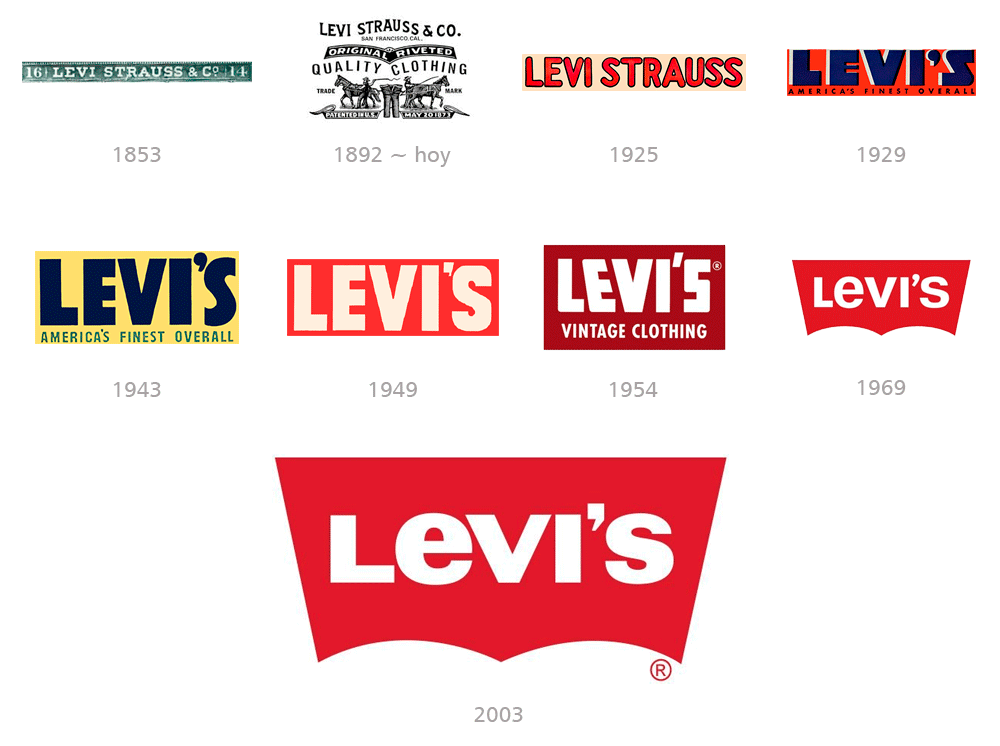

Logitech
Logitech is an international manufacturer of computer software and accessories established in Switzerland in 1981.
The first Logitech logo is composed of a geometric emblem and a wordmark with thick, rounded letters overlapping each other, with thin white lines.
The 1985 redesign changed the logo, making it more modern and elegant.
Logitech's most iconic emblem was introduced in 1988.
The image, inspired by abstractionist artists such as Joan Miró, features a hand-drawn black eye with a modern, eye-catching color palette.
The 1997 redesign has softer, more simplified contours, but maintains the same artistic style.
In 2015, the iconic graphic part of the identity was eliminated, making its logo the main element.
The black wordmark is executed in bold sans-serif typeface with the letter "G" divided into two parts, representing a smile.
Sometimes the logo is accompanied by a stylized abstract letter “G” in light blue, which consists of a vertically placed arch and an angular figure.
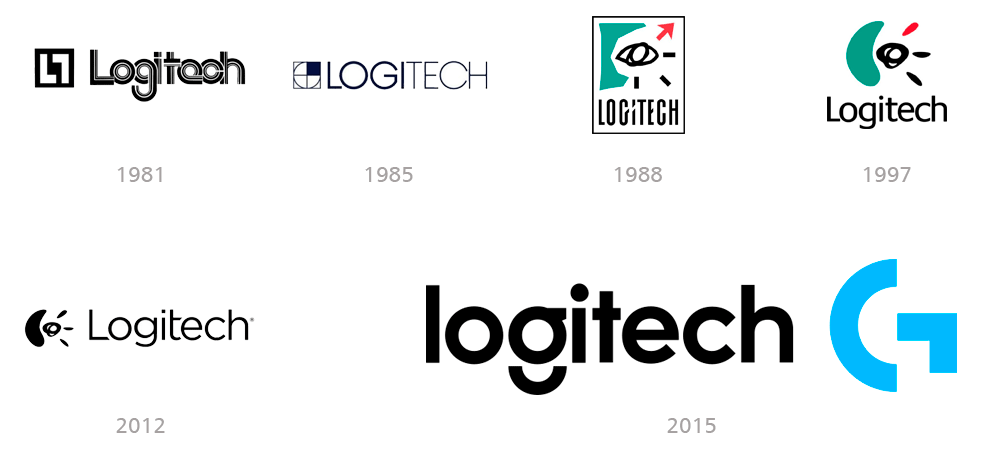
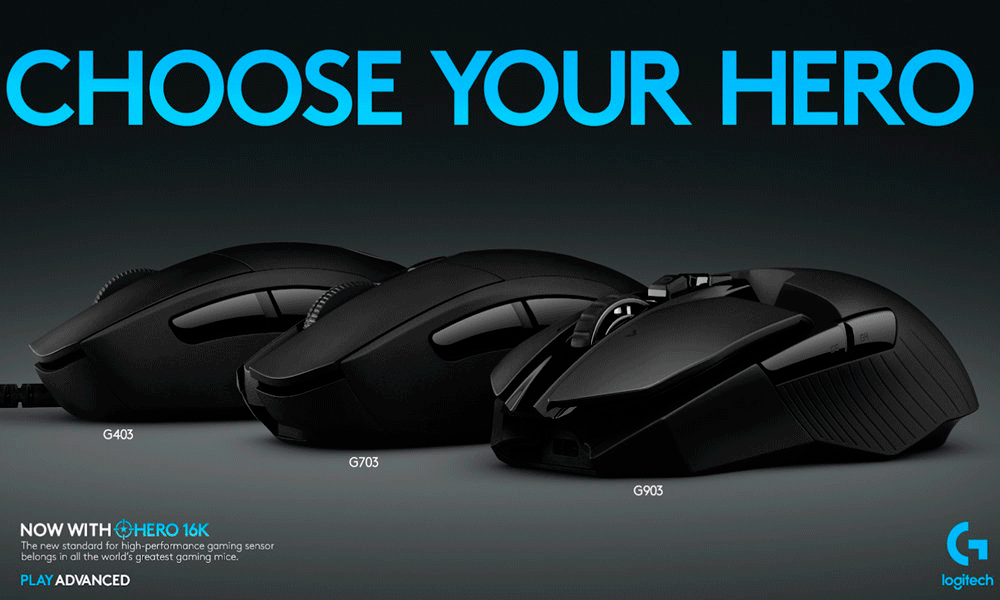
McDonald’s
McDonald's is not just a fast-food chain, but a truly legendary brand, representing an entire generation.
Its logo, featuring an arched gold “M” on a bright red background, is one of the most recognizable logos in marketing history.
The company was founded in 1940 under the name "McDonald's Famous Barbecue".
In 1953 the company finally changed its name to simply McDonald’s and this is where it all begins.
The logo is still far from what we all know today, but the color red appears in the color palette, giving the right direction for the brand.
In 1961 Stanley Meston created the emblem that everyone knows today.
The iconic Golden Arches logo was inspired by the architecture of the company's first restaurants, specifically their rooftops.
That's why there is a diagonal line running through the arches in the first version of the logo.
The logo was simplified in 1968 by removing the diagonal line and shortening the inner ends of the arches, making them look more like the letter “M”.
In 1975, the emblem with the wordmark was placed inside a red rectangle with rounded corners and white lettering.
This logo is probably the most recognizable version of all fast food company logos.
The company still uses it, being instantly recognizable around the world and evoking a sense of joy, happiness, and passion.
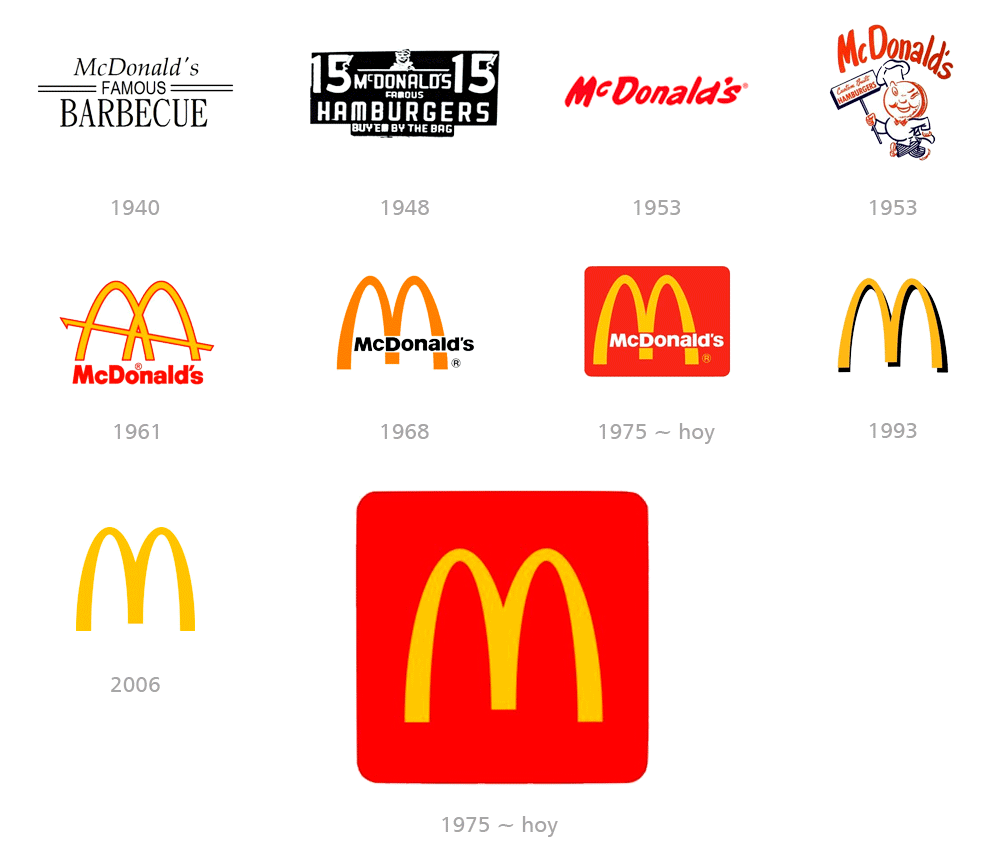
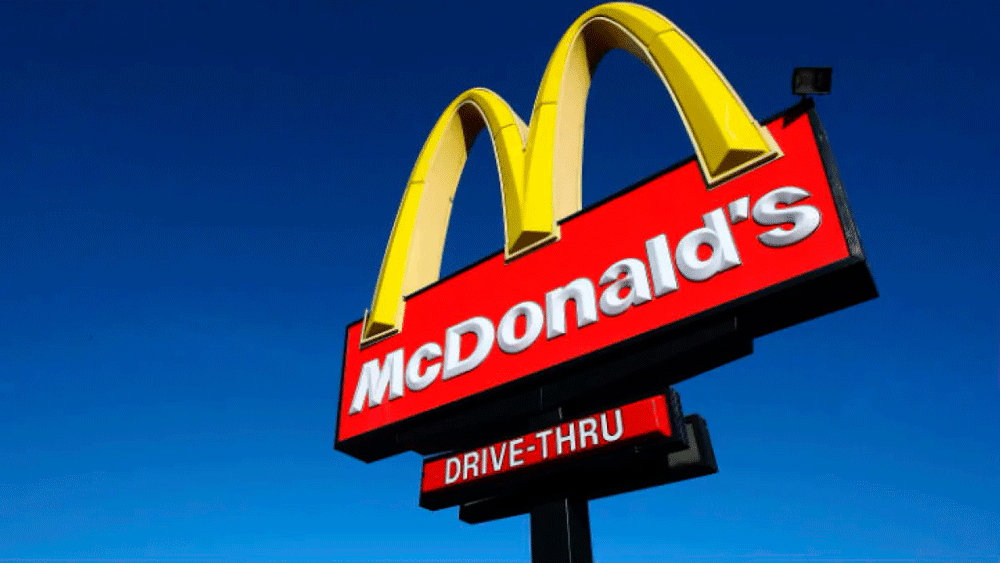
Mercedes Benz
There is hardly any car badge, which is more recognizable than the Mercedes-Benz emblem.
The three-pointed Mercedes-Benz star in a circular frame was adopted as the company's main emblem in 1916.
Since then, it has only slightly refined its contours.
The emblem was designed by the brand's owners, Adolf and Paul Daimler, who were inspired by a postcard image they received from their father, Gottlieb Daimler, in the early 1870s.
This emblem has a meaning for the company: to motorize the entire world on land, water, and air. Three directions, three points, three goals.
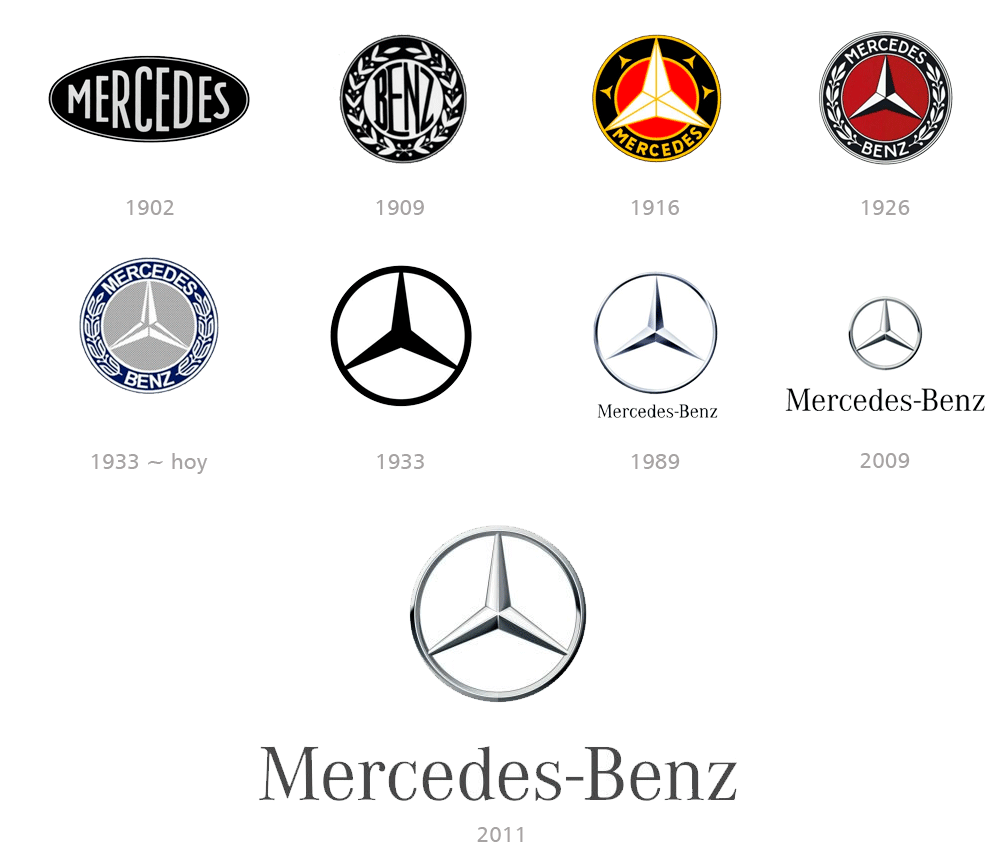
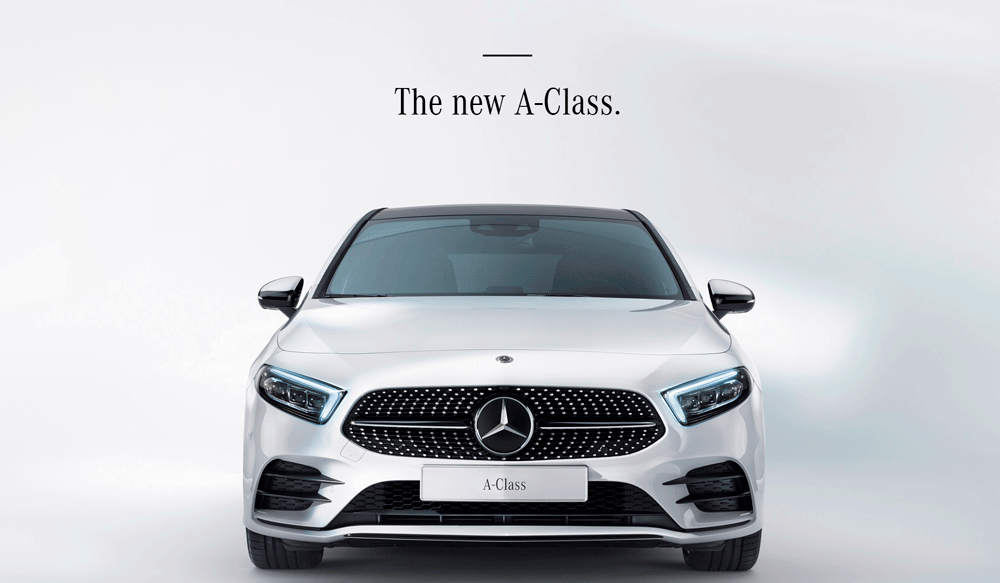
Microsoft
Microsoft was founded in 1972 and is the largest computer software and peripherals company, under the name Traf-O-Data.
In 1975 the company was renamed Microsoft and the first official logo was designed by Simon Daniels.
This is a monochrome logo where all capital letters are made up of numerous thin black and white lines.
In 1980, Simon Daniels himself redesigned the Microsoft logo again, changing the font to a sharper, more modern one.
The iconic Microsoft logo that almost all of us remember was designed by Scott Baker in 1987 and remains almost unchanged for 24 years.
The wordmark has a unique element: a white triangular cutout in the letter “O,” which aims to separate “Micro” from “Soft” and make people look at the company name from a new angle.
In 2012, Microsoft began a major rebranding of its corporate visual identity.
The new logo is designed by Jason Wells and features a geometric icon, where four small colorful squares form a larger one, reminiscent of Windows.
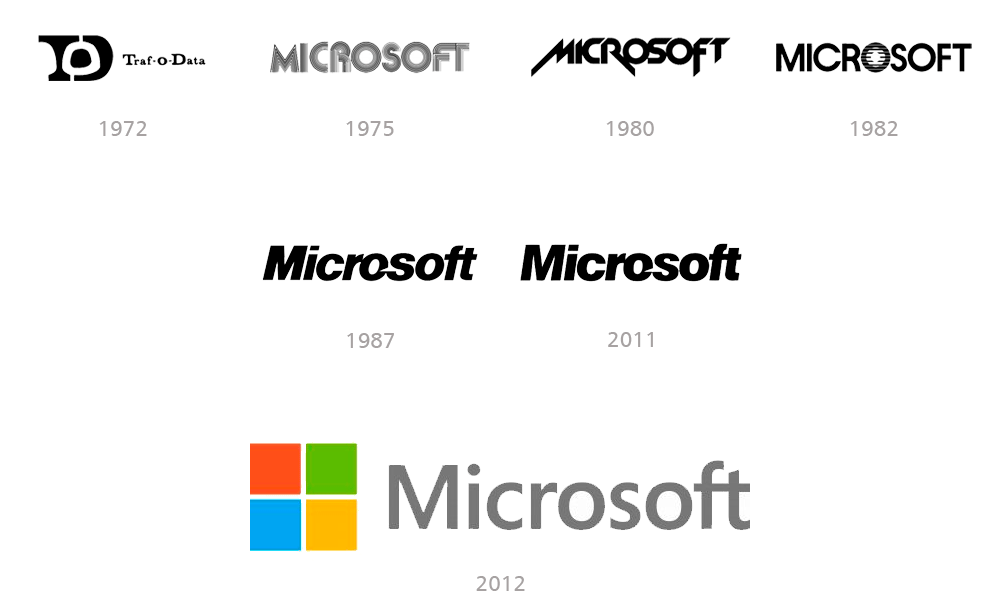
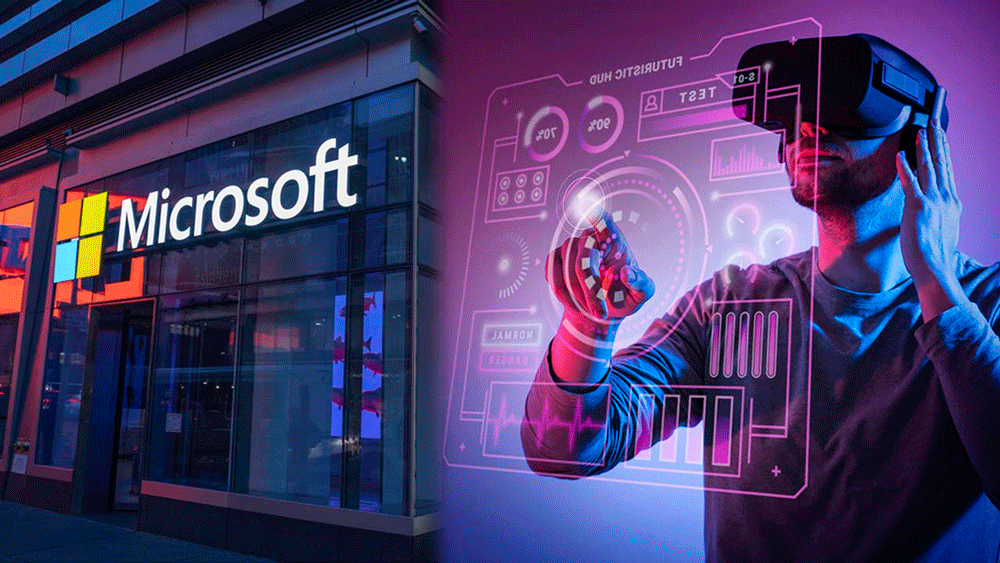
Mirinda
Mirinda is the name of one of PepsiCo's best-known soft drinks.
The brand was founded in Spain in 1959 and was a great representation of the local orange industry.
After Mirinda was acquired by Pepsi, it gained worldwide popularity and is now available in several flavors.
The first Mirinda logo was created in 1959 and remained with the brand for over ten years.
A bright green emblem depicting a stylized massive letter “M” in double green and white outline contains the denomination in white.
Starting in 1970, the brand sought to demonstrate the concept of the orange in its logo and the direct relationship with the fruit, undergoing multiple redesigns over the following years.
In 2017, Mirinda's visual identity features only a stylized green logo on a white background, which can be changed to orange as needed.
In 2023, the company introduces a fun update in the form of a colorful initial in the background, reminiscent of its first logo.
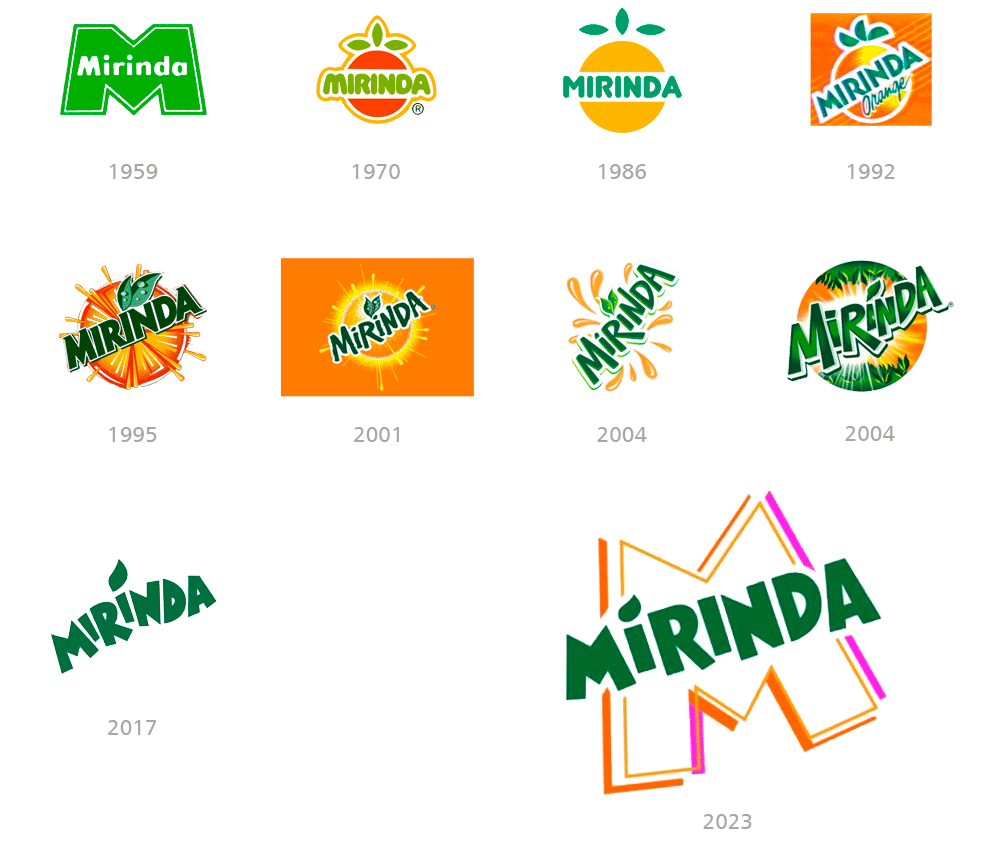

Netflix
Netflix is one of the most popular streaming services in the world.
The first Netflix logo, created in 1997, features the website's name with a film strip separating the characters "T" and "F."
In 2000, Netflix introduced a new version of the logo, which only remained with the company for a few months.
Starting in 2001, it adopted the design and color palette that has remained the same to this day, with only a few very subtle changes.
In 2016, Netflix introduced a new logo consisting of a solitary "N."
It's not a replacement for the current brand, but rather a smaller alternative as an avatar for mobile apps and social media.
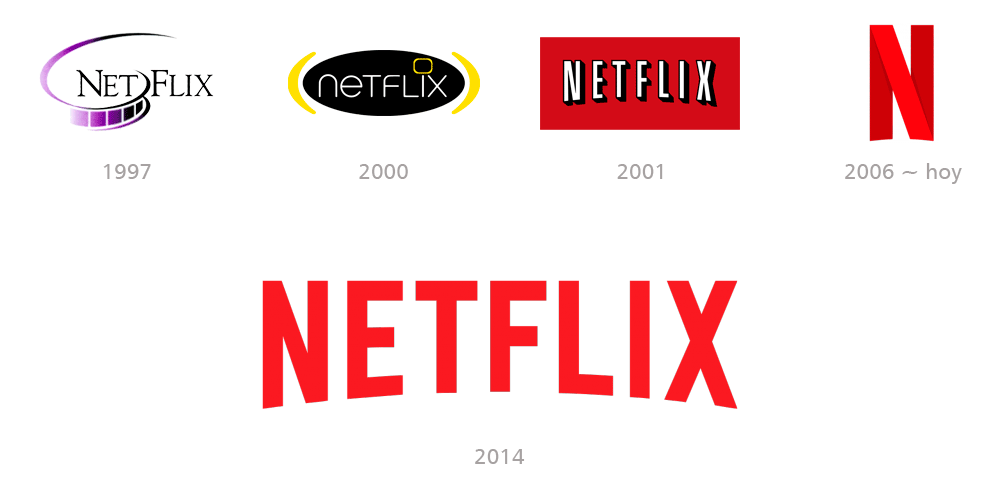
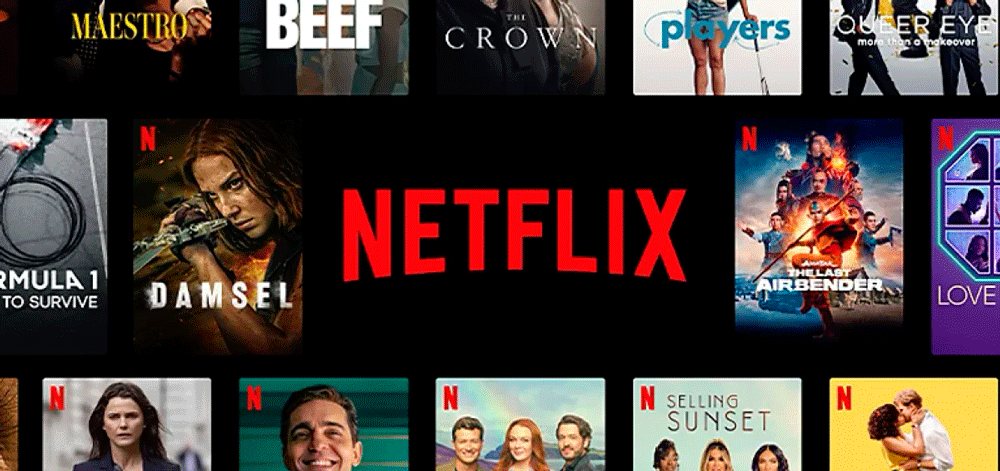
Pepsi
The 2023 design draws on Pepsi's 125-year history, striking a balance between classic and contemporary.
Community participation was considered, with many drawing the logo with the name inside the balloon, which led Pepsi to bring back this feature.
The goal was to create an image that was recognizable, timeless, and would connect with new generations, preparing them for the future.
The new design merges the Pepsi globe and wordmark, incorporating electric blue and black for added contrast and dynamism.
A new custom typeface has been created, repositioning the brand name within the globe, evoking classic versions of the logo.
This one maintains its classic red, white, and blue stripes, but with a slight change in its appearance reminiscent of its 90s image.
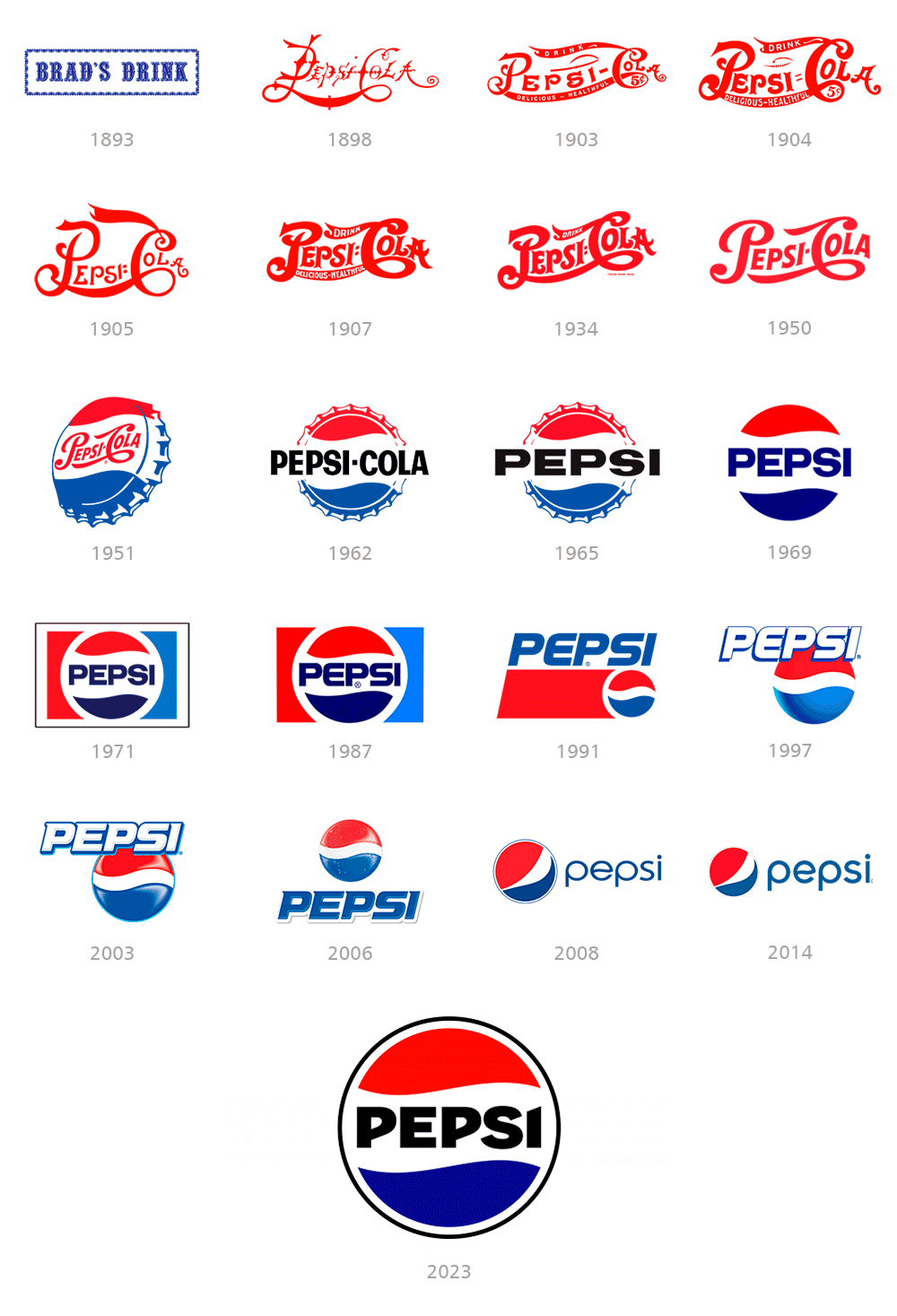
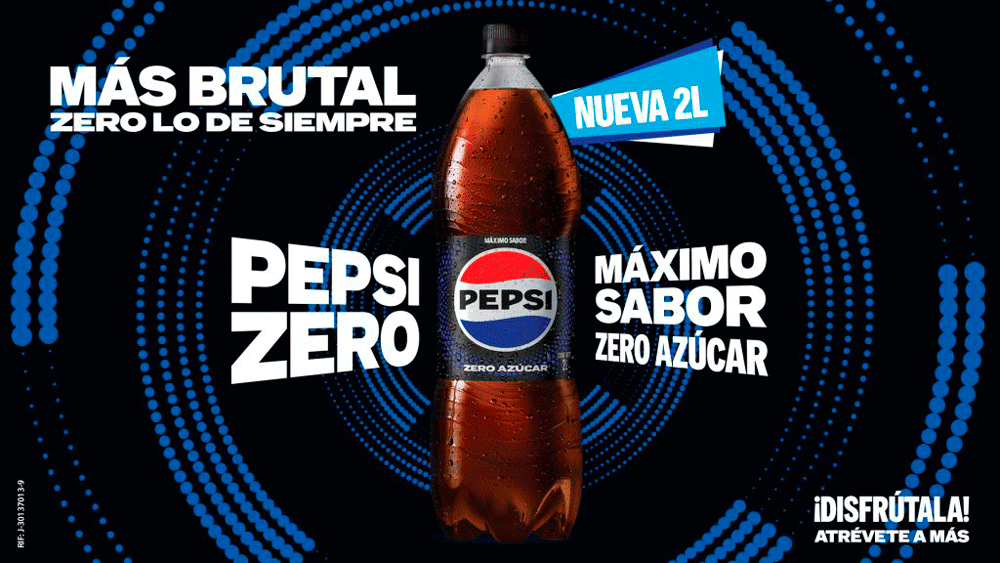
Peugeot
Peugeot is a French brand of automobile manufacturers, founded in 1810 by Emile Peugeot.
The Peugeot logo dates back to 1847, making it the oldest automobile emblem in the world.
The idea of the lion as a brand symbol was born in the mid-19th century, when the Peugeot family's steel company needed a logo that reflected the company's activity and strength.
The Peugeot logo has undergone numerous changes throughout its history, but the lion has always been there.
It was not until 1927 that the Peugeot brand name appeared for the first time, and the lion design became more stylized and took on the form of a shield.
In 1948, the image of the rampant lion showing its claws in an attack position emerged.
It is designed in solid black and could be placed on any background.
In 1960 the brand drastically changed its image with a more three-dimensional image of a lion's head with a thick mane.
The year 1975 marks the birth of the famous "Lion Outline" logo. The Rampant Lion is back, but now it looks futuristic.
In 2010, it was redesigned with a 3D effect that is enhanced by the metallic color palette.
The visual identity changes completely again in 2021.
The new logo features a sleek black shield with a double white outline and a stylized portrait of the lion, reminiscent of the 1960s design.
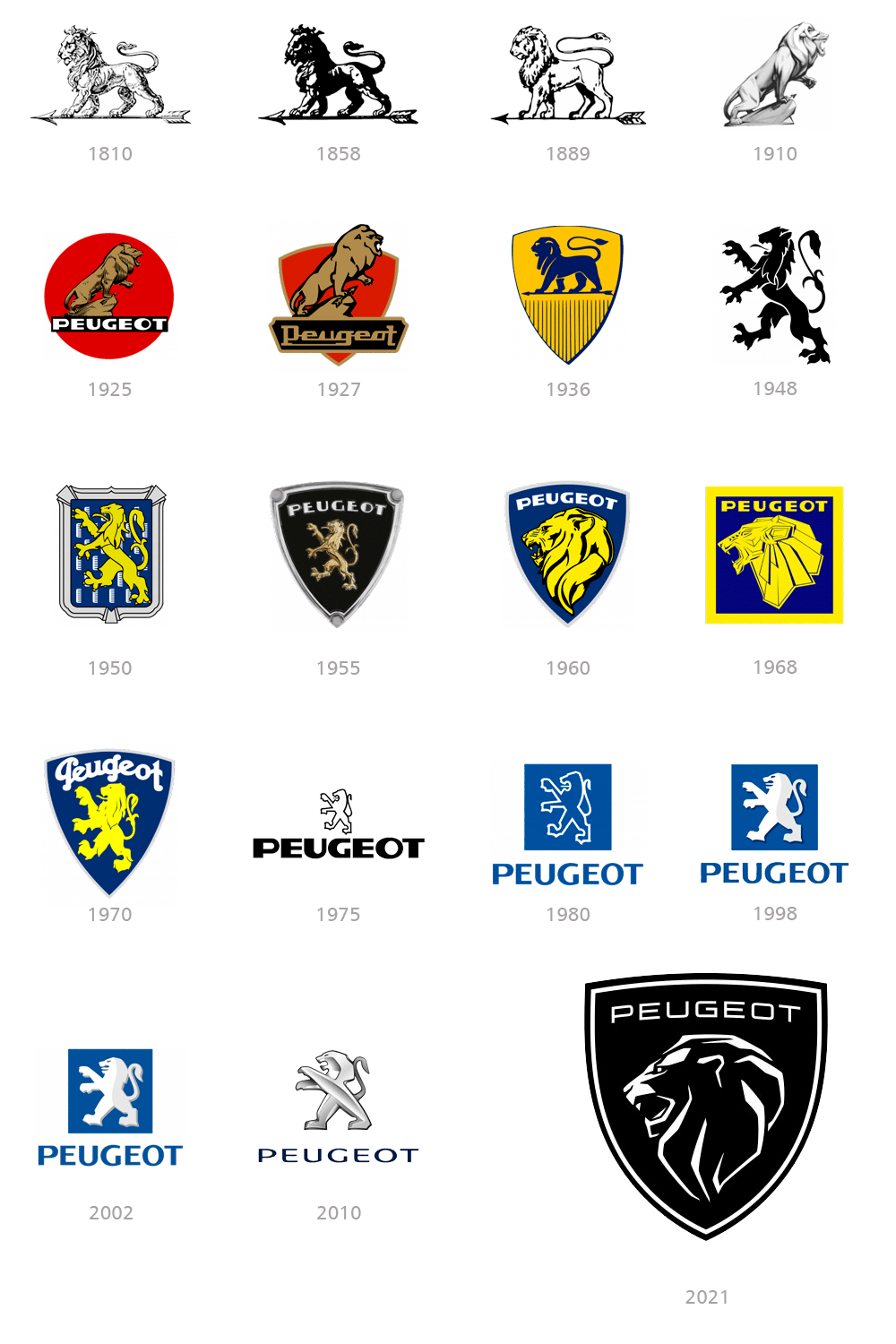
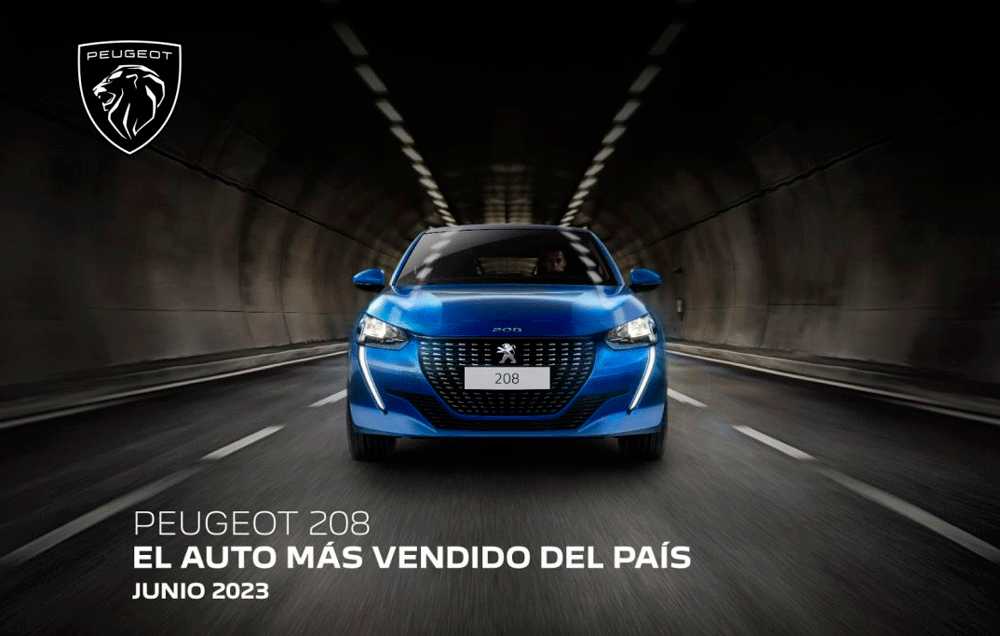
Pringles
Pringles is the name of a food brand that was established in the United States in 1968 and is known for its potato chips in cylindrical containers.
The Pringles logo has undergone several modifications, but has always featured the Mr. Pringle mascot and the product name.
The original 1967 branding features a portrait of a rounded man executed in bold black lines with red and black striped hair.
The yellow lettering of "Pringle's" is placed below the portrait in an enlarged solid black bow.
In 1986 the brand name changed to "Pringles" and the logo was redesigned.
The portrait changes its shape to a circle and the lines of the face are redesigned in a more modern and playful way.
In 2002 the brand introduced a more elegant and ornate logo and the bow became smaller in gradient red, with its thick black outline.
The man with the mustache is redesigned in a more contemporary way on a red background.
The current logo was created in 2009 and is based on the previous version, but the background is removed and the typography is changed.
In 2022, a simplified version was created for use outside the United States, with the name written in white inside a red bow tie below the face.
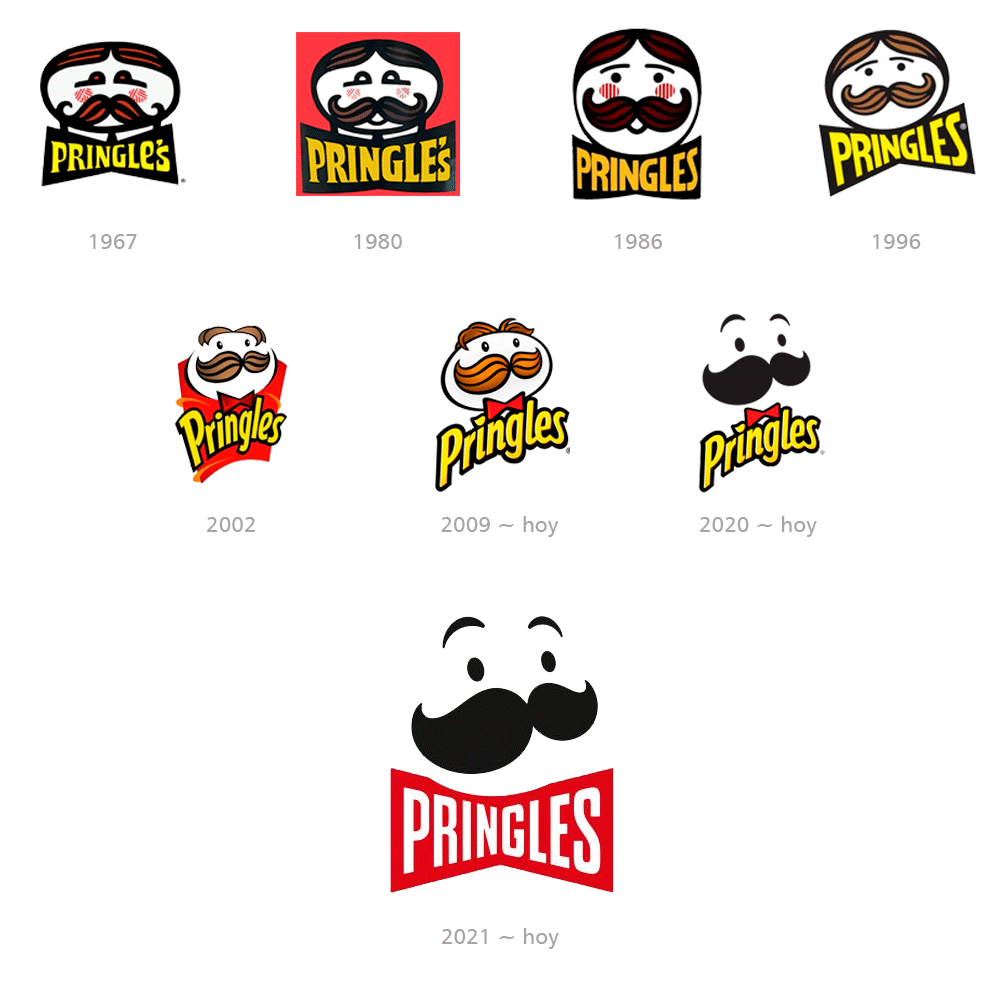
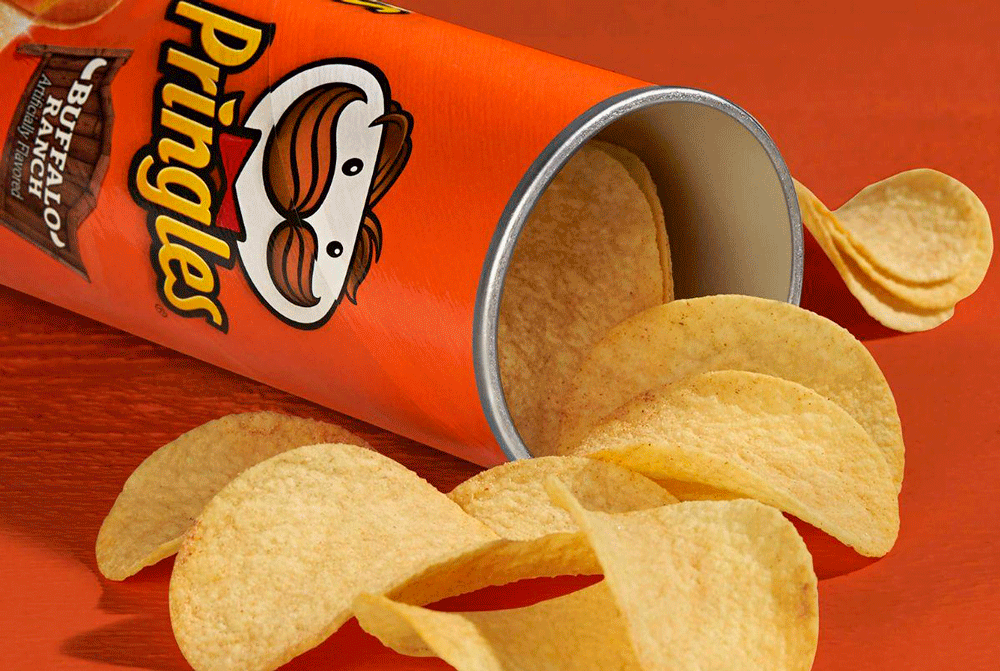
Puma
Puma is one of the oldest companies in the world of sports, and its logo is one of the most recognizable emblems in the history of sports brands.
The company was born from a simple family dispute between brothers, which resulted in the formation of not one, but two legendary brands: Puma and Adidas.
One of the brothers named his company Addas (later renamed Adidas) and the second, RuDa, which later changed its name to Puma.
The puma has appeared in the brand's logo since the company's inception.
The jumping animal is a representation of movement, power, freedom, and speed, qualities that are strongly connected to sport.
An emblem is created in the form of a soft and elegant strip, a curved line, which narrowed towards the top.
To this day, the company uses this minimalist emblem on its clothing, as a symbol on most of its sneakers.
The puma began to be positioned more vertically in 1970, and thus the royal predecessor to today's iconic badge was born.
The shape strip replaced the cat again in 1976, positioning itself below the lowercase logo, with the vertical stroke of the "P" elongated.
The logo's letters were capitalized again in 1978, and the leaping puma returned to the upper right corner of the wordmark.
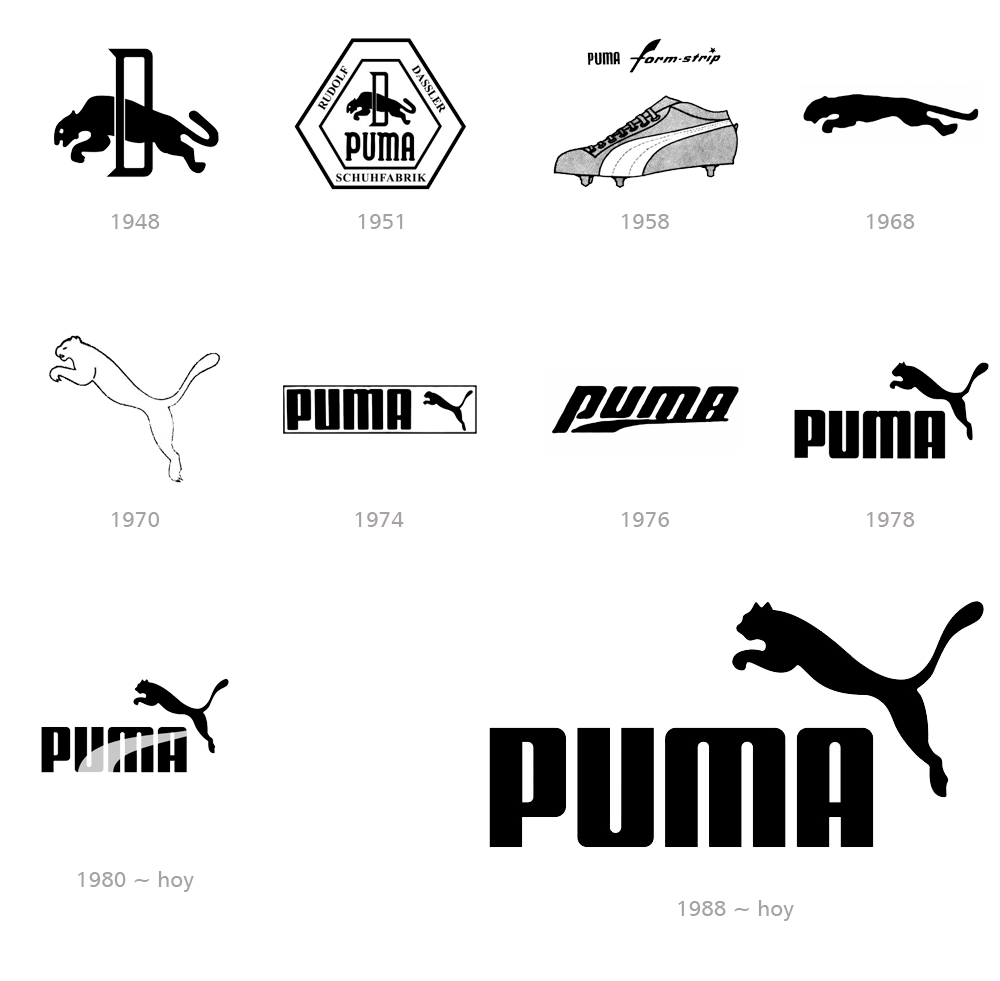
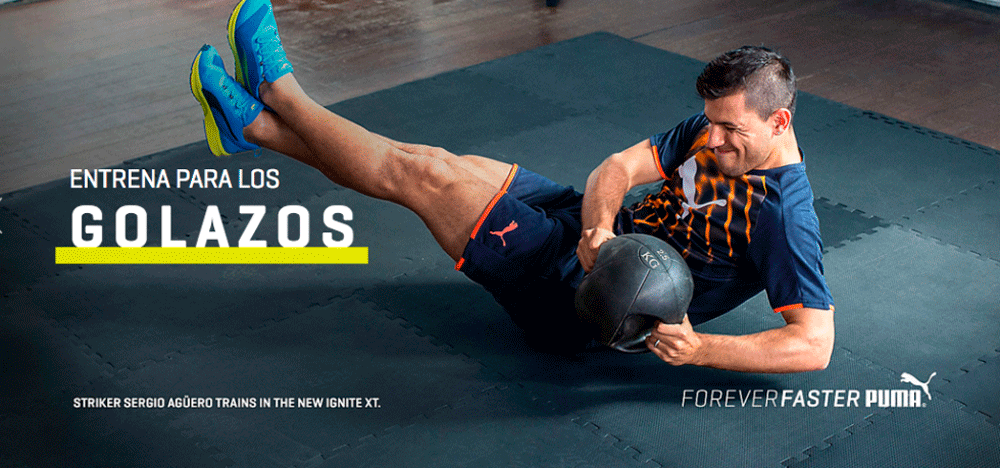
Windows
Windows is the name of a computer operating system developed by Microsoft and undoubtedly the most popular in the world.
Since its launch and creation of its first logo in 1985, there have been more than 15 versions designed to date.
They all have one thing in common: the image of a window, which was not always so legible, as in some designs it resembles a flag.
The era of the Windows Flag logo begins in 1992 and lasts until the 2010s.
The first colorful badge was designed in 1992 and had a waving flag shape that dropped into pixels on its left side.
In 1995, a new concept was born in the Windows operating system that was truly revolutionary and changed the way we communicate with the computer.
The logo also features a notable redesign, with the flag now positioned diagonally to the left of the nameplate, which has now been enlarged.
The typography changes to bold sans-serif "Windows", which is now the main part of the logo.
In 2001, the black frame was removed from the flag, so the emblem now consists of only four waving squares with a three-dimensional appearance.
In 2006, the emblem acquired a flatter, more modern design. It still features gradient colors, but the square texture is no longer three-dimensional.
The word "Microsoft" is removed from the logo, and "Windows" takes on its own identity, making it look more minimalist and professional.
A new era of visual identity design begins for Windows in 2012, representing the most notable change of this century, coinciding with the launch of Windows 8.
With the Windows 8 operating system, the design of the operating system's graphical interface also changes significantly.
This is evident in the logo design created by Wolff Olins. which uses only the color blue, the waveform is gone, and the emblem is strict and geometric.
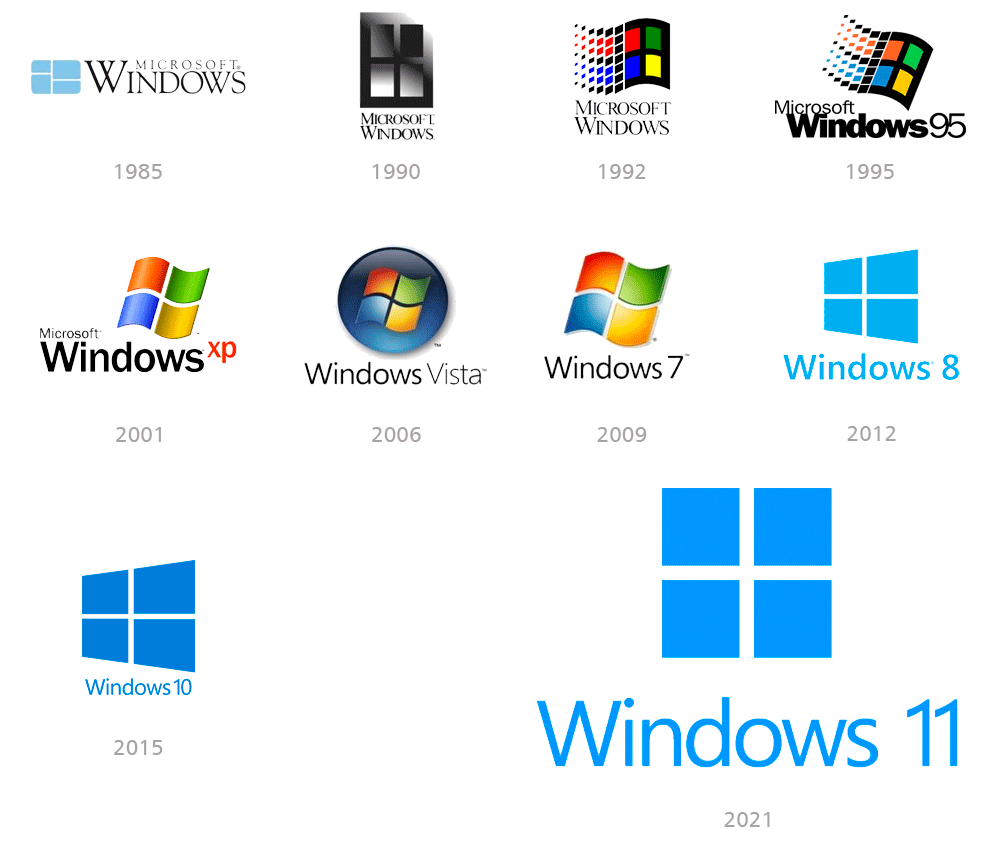

Fashions, trends and functionality
By looking at 40 brands together rather than individually, we can perceive certain patterns that are repeated at certain times and at the same time.
This has to do with the fashions and trends of each era that force brands to adapt and compete with each other.
Throughout their history, there are brands that have returned to the original concepts of branding.
We can see this in the design of their brands, reminiscent of the past, but this time more stylized and in keeping with the times.
Some brands have changed their styles, fonts, concepts, and colors, allowing them to evolve and become what they are today.
If you want to know more about color in branding, I recommend reading my article How to apply color psychology in logo design, where you will see several of the logos mentioned in this article and many more.
Three-dimensionality
Towards the beginning of the 2000s, with the arrival of new operating systems, we can notice that many logos acquired three-dimensional aspects.
These were initially popularized for their ability to stand out, generate visual impact, and convey a sense of innovation and modernity.
With new 3D design technologies, brands are beginning to acquire volume and textures through lighting and shadows, simulating various real-life materials.
The new trend of creating animated logos for advertising and multimedia applications was also favored by 3D design.
With the advent of mobile devices and touch screens, three-dimensionality adds depth and realism.
A raised design makes the logo “pop” off the page or screen, capturing the viewer’s attention more effectively.
As we move from analog to digital, people no longer need buttons on keyboards, but they do need to identify them on screens.
The mouse's tip is now the tip of our index finger, making it necessary to highlight buttons and clickable areas on small screens.
In a sea of two-dimensional logos, 3D offers a unique way to stand out and create a memorable visual identity.
Sectors such as technology, video games, and fashion, where innovation and image are crucial, are the first to adopt three-dimensional logos.
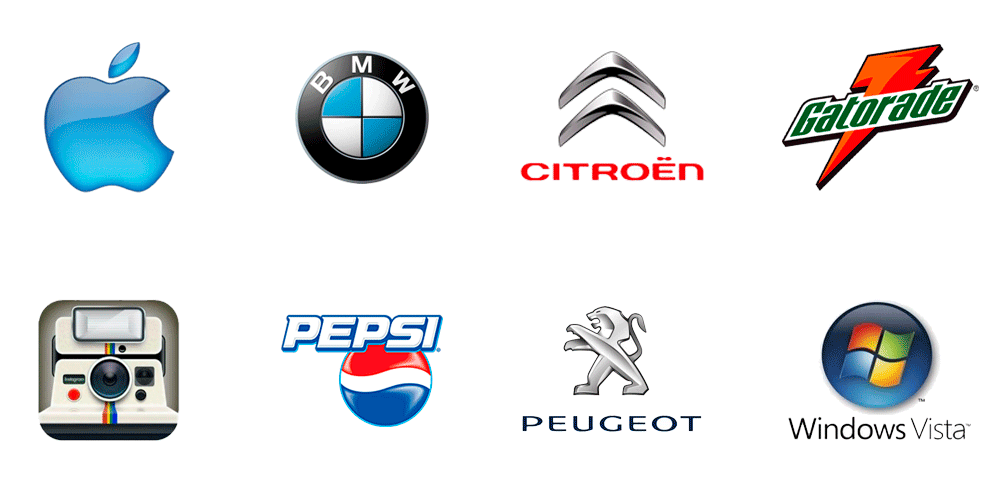
Return to simplicity
Everything changed when Apple announced iOS 7 in 2013 and quickly imposed a return to flat, minimalist images.
The rise of mobile devices forces web design to adopt responsive development that adapts to various screen sizes, even very small ones like a smartwatch.
That's why we see the opposite process, with increasingly minimalist and flat logos.
The need to identify brands on social media and websites brings the same responsive approach to logo design as web design.
"Avatars" and "favicons" are born, which are highly simplified icons of logos for profiles on social networks and websites.
I suggest you read my article What is a responsive logo to understand this topic.
At the same time, we find a trend toward monochromaticism that favors the simplicity of logos and their printed application on any surface and digital media.
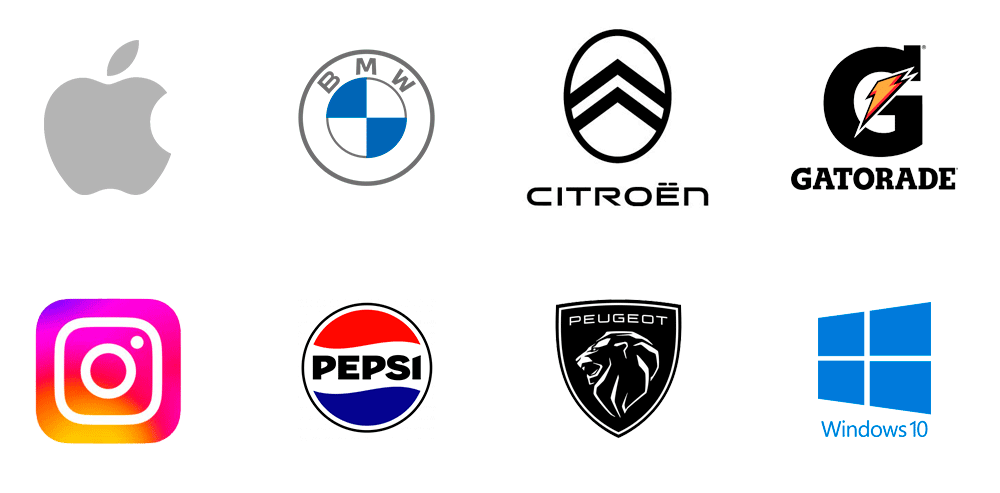
Final conclusion
I hope you enjoyed this article and understood the importance of brand redesign to keep your brand identity current over time.
We've learned stories and how brands have evolved and adapted to the trends of each era, new technologies, and new applications.
Some brands have managed to maintain their features almost unchanged, while others have made frequent and very significant changes.
There are brands that have even changed their name, colors, and personality, undergoing a complete rebranding.
It's all a matter of knowing how to adapt and evolve as the market needs.
The graphic designer is always a key professional in the development of a company's visual identity.
If you've been wanting to start your own brand and think I'm the perfect person to develop it, don't hesitate to contact me.
In the Related Posts section below, you will find some articles with specific topics that complement the one you just read.
I invite you to read them, share them and leave your comments if you wish.
Thanks.


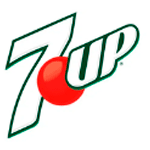
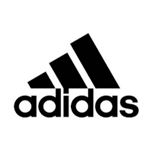
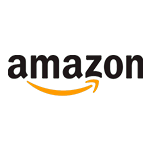
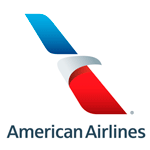
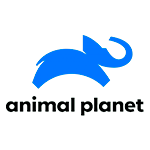

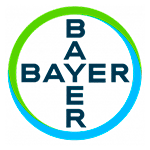
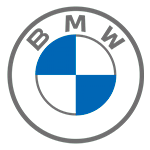
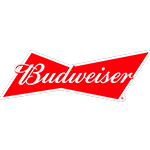
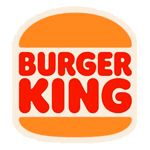
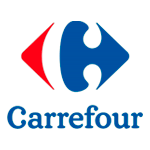
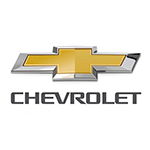
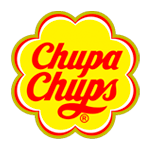
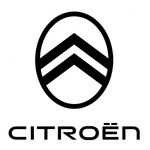
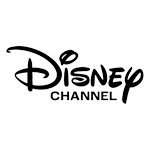
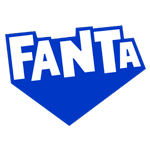

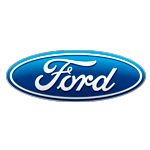
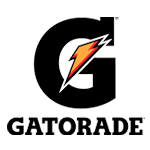

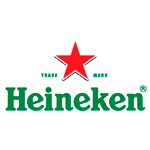
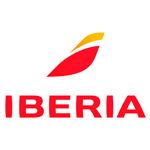
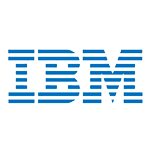
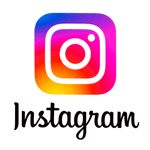
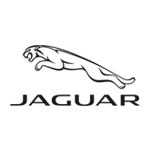
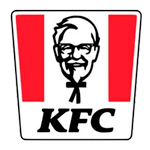
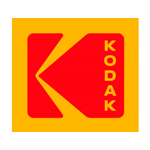
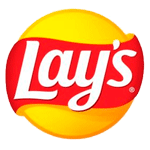
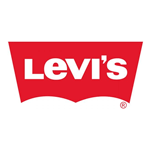
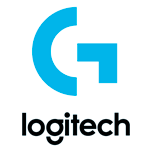
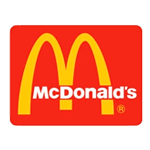
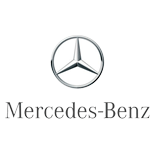
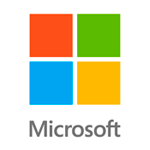
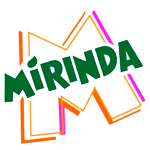
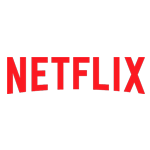

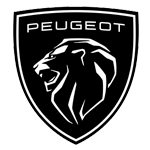
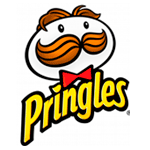
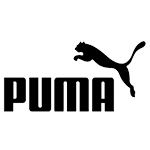
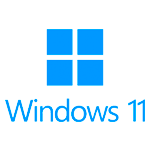

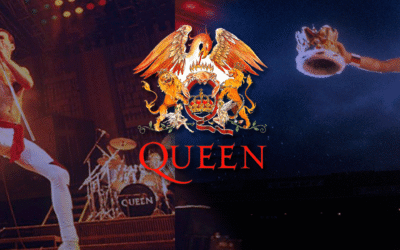
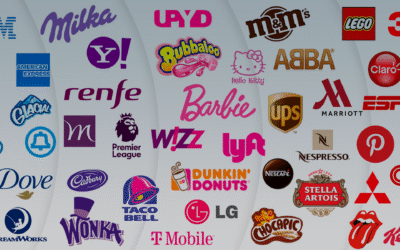
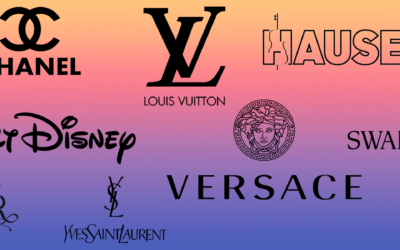

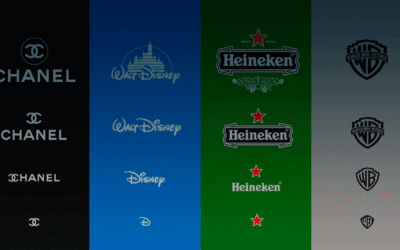
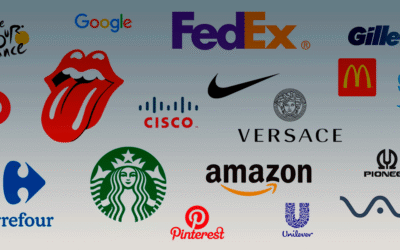
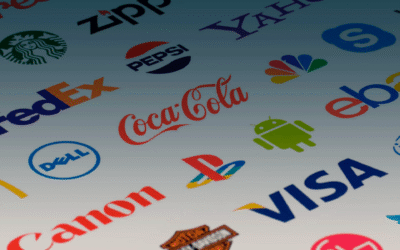
Muy buen trabajo amigo.
me ha sido de gran utilidad para una monografía de la facu
Muchas gracias